
- Date Converter
- Nepali Unicode
- Preeti to Unicode
- Unicode to Preeti
- Digital Marketing
- Entertainment

Essay About Tihar Festival

What is Tihar?
Tihar also is known as Dipawali is one of the greatest festivals of Nepal. Not only Nepal, but it is also celebrated in Indian states. It generally falls in the month of October/November. Tihar is the second biggest festive celebration in Nepal after Dashain. It is known as Swanti among Newars and Diwali among the Madhesis community. This festival is known as the festival of lights. Lights are the prominent feature of this festival. Diyos are lit inside and outside of the house during the night. People keep their houses and surrounding very neat and clean. They decorate their house with flowers, pictures, and keep oil lamps burning at night. Moreover, different patterns and designs are also made on the floor using color, rice, sand, etc. known as Rangoli, which is regarded as the sign of welcome to Goddess Laxmi. The festival is celebrated for five days. Hence, it is known as Panchak.
The festival begins in Triyodashi of Karthik Krishna Paksha, a day is known as Kag Tihar, and ends in Dutiya of Kartik Sukla Paksha, a day is known as Bhai Tika. The first day is called the Kag Tihar. On this day, Crow or Kag is worshipped as the message carrier. Similarly on the second day known as Kukur Tihar¸people worship dogs as the protector of the houses and properties. According to the Hindu scripture, Yamaraj, the god of death is believed to have two dogs who were the guard of the Narga, the hell. So, People offer garlands, tika, and provide them food. The third day of Tihar is known as Laxmi Pooja. Goddess Laxmi is worshipped on this day.
Laxmi is regarded as the Goddess of fortune or wealth. So, in this day Cows are worshipped as an incarnation of Goddess Laxmi. They feed cows and offer garlands. It is believed that people can have a lot of wealth if Goddess Laxmi is pleased. So, Houses and surroundings are kept clean, decorations are done with garlands of Saya Patri and Makhamali. In the evening time, Goddess Laxmi is welcomed in the house by lighting different oil lamps or candles around the house so as to bring prosperity and wellbeing.
📌 Another Essay – Essay on Importance of English Language
At night, the girls enjoy dancing and singing known as Bhailo. They visit houses of neighbors all night collecting amount as the tip or the charity for them. On the fourth day, different poojas are performed depending on the people’s culture. Mainly, people worship oxen as a useful and faithful animal. The followers of Vaishnavism do Govardhan Pooja by worshipping the cow dung as the reflector to Govardhan Mountain. Moreover, in the evening the Newari Community performs the Maha Pooja(self-worship). The day marks the new year of the Nepal Sambat Calendar. Moreover, in this day people especially boys enjoy playing Deuso in which one person narrates the song and rests sings as a supporter.
The last day of the Tihar is known as Bhai Tika. On this day, sisters worship their brothers by putting Tika on the forehead and garland around the neck. It is done to wish for the long life and protection of the brothers. The Bhai Tika follows the tradition of circling the brother by dropping the oil from the pitcher esp. copper one, putting oil on the hair of brothers, and applying seven color tikas( Saptarangi Tika ). They also present the gifts along with the sweets, fruits, and other specialty food items. Those without brothers or sisters, join their relatives for the Tika.
A legend Dipawali has that the lord King of Death – Yamraj went to his sister and stayed there for five days. His sister hailed him heartily and offered a tika and garland around his neck. She provided delicious food, she wished for his peace, progress, and long life. Hence, the sisters worship the Yamraj before worshipping their brothers at Tihar. It is believed that the life span of the brothers lengthens if they worship the Yamraj. This is how it is a festival of joy and jubilation. Similarly, it is an occasion to strengthen the tie-up between brothers and sisters.
- Happy Tihar Wishes for relatives
- Happy Tihar wishes collections
Share this:
Read also related posts, privacy overview.
- Reveel Protocol Potential Airdrop Backed by Binance
- KiloEX Confirmed Airdrop Invested By Binance Labs
- Chance of Getting Two Potential Airdrop | Backed by Polychain, BinanceLabs and Others
- Caldera Potential Airdrop Invested $9M By Sequoia Capital And Dragonfly
- Polyhedra Network Potential Airdrop biggest Investors are Binance Labs, Animoca Brand, Polychain
Greetinglines
Best Greetings For Loved Ones
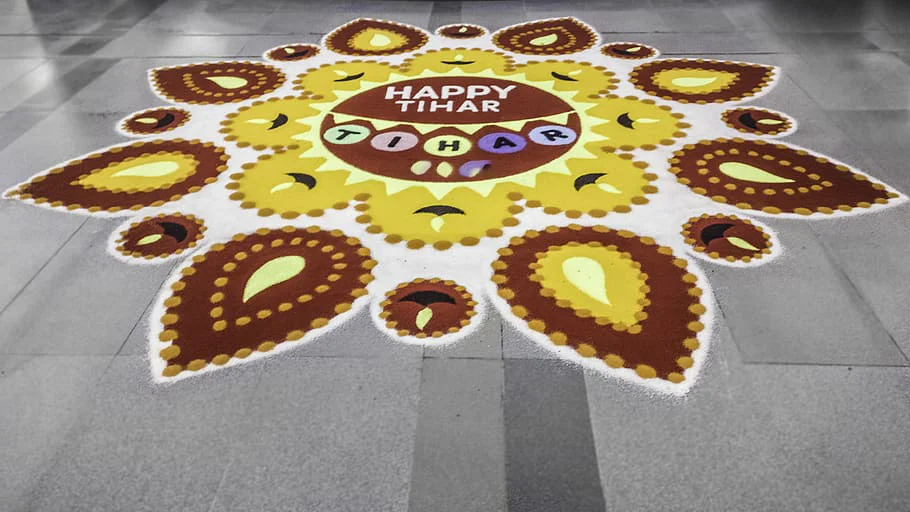
Essay on Tihar Festival
Essay on tihar festival – 800+ words.
Tihar is one of the biggest festivals celebrated in Nepal after Dashain . With the end of Dashain, we have Tihar just around the corner. Tihar is celebrated not only in Nepal but also in some states of India. It is also popularly known as Dipawali and even as the “Festival of Lights”. Dipawali is best known as Diwali in India.
Tihar is considered to be of great importance as it shows the contribution to not just the humans and the gods, but also to the animals like crows, cows, and dogs that maintain an intimate relationship with the humans. The main Goddess that is worshiped in this festival is Goddess Laxmi, also known as the goddess of wealth and luck.
Tihar falls right after Dashain. It falls in the month of Kartik ( October to November in Solar Calendar ) and continues for five days. This festival has its own unique ways of celebration. Each of the 5 days of this festival is for celebrating and worshipping different animals and gods. The first day of Tihar is known as Kaag puja (worship of crows).
In ancient mythology, Crows are known to be the “messenger of death”. And the first day of Tihar is their only day of rest. So to ensure they have proper rest, people feed crows and worship them lest to prevent any negative news to be informed which would bring a bad omen. People worship the crows to bring good luck to themselves.
📌 Essay on Importance of English Langauge
The second day of Tihar is known as Kukur Puja (Worship of dogs). It is to worship a mans’ best friend, dogs. On this day dogs are treated with delicious treats and hung garlands on their neck with tikas on their forehead. We can see many dogs roaming around the city with a tika and a garland on their necks on this day. It is believed that dogs can see incoming dangers and death and is the “gatekeeper of the underworld”. It would be for the best if every stray dog we see on the streets treated this way each and every day.
The third day of Tihar is Gai Puja – Laxmi Puja (worship of the cows and goddess Laxmi). This is a special day which has its own separate set of celebrations. In the mornings, the cows are worshipped and hung garland around their necks, with their body in red colors with holy strings tied onto their tails. In Hinduism, cows signify wealth and prosperity. The uses of cows have outstripped many domesticated animals. So on this day the cows are worshipped and fed the juiciest of grass as a sign of gratitude. In the afternoons, the entire house is cleaned and groomed. People may even put fancy lights on their rooms and outside their houses.
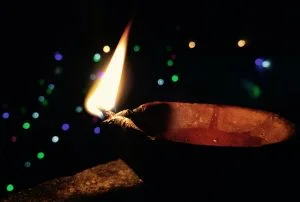
Houses are cleaned and the doorways and windows are decorated with garlands made of Saya Patri (marigolds) and Makhamali (Gomphrena globosa) flowers. People also put paint small patterns of footprints to and from their entrance to their rooms as to invite Laxmi in. At night, we can see beautiful and dazzling lights from Diyo(oil lamp) as well as fancy lights. This is done to attract Goddess Laxmi’s attention. The night of the Gai puja is truly a spectacle to look at. Starting this day, people (especially children and teenagers) come together and travel house to house sing Deusi and Bhailos (traditional songs) and earn money as well. The people who witness these traditional songs give some amount of money as an offering. Offerings may also include delicious Sel Rotis ( traditionally homemade circle snacks ), fruits, and rice grains. From the night of Gai Puja, the nights become more lively.
The fourth day is also known as Govardhan Puja. An ox is also an indispensable lifeline for a farmer, so on this day, farmers worship oxen. The fourth day of Tihar is also taken as the start of a new year for the Newar community and similarly, they celebrate “Mha Puja”. The night is lively with Deusi and Bhailo going on.
The widely celebrated fifth day of Tihar is also known as Bhai tika . On this day brothers and sisters come together. Sisters apply multi-colored tikas (Saptarangi tika)on their brother’s forehead. It is to ensure the long and prosperous life of their brothers. According to Hindu mythology, Yamraj, the God of Death, visited his sister, Goddess Yamuna, on this day during which she applied the auspicious tika on his forehead, garlanded him, and fed him special dishes. Together, they ate sweets, talked, and enjoyed themselves to their hearts’ content.
Upon parting, Yamraj gave the Yamuna a special gift as a token of his affection and, in return, Yamuna gave him a lovely gift which she had made with her own hands. That day Yamraj announced that anyone who receives tilak from his sister will never die on that day. And so it gave birth to Bhai tika. Sisters also prepare gifts for their brothers and brothers also gift their sister’s various things. After the ceremony is done, everyone present will observe a feast with delicious meals. It is a grand festival that is celebrated by all.
The bad social customs present in these festivals include the mentality of people. People think they need to make it extravagant. No, it is not that. Each and every festival are to be celebrated with the right minds and any pressure. It isn’t necessary that one must have a grand celebratory feast, it isn’t necessary to gift expensive gifts. the main essence of Tihar is to bring people together, share the love, and enjoy it to one’s content. The real joy of Tihar can only be brought together with the closeness of one’s loved ones.
Other Essays
- Essay on Teej Festival
- Essay on Dashain Festival
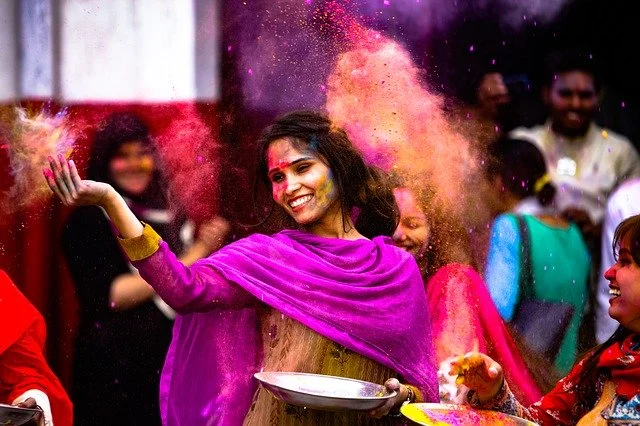
You May Also Like

Essay on Holi Festival

7 Best Paraphrasing Tools For Rewriting Essays

Essay on cleanliness for 800+ Words | Paragraph on cleanliness
11 thoughts on “ essay on tihar festival ”.
YOU NEED HELP TO BUILD SEO LINKS FOR: greetinglines.com ?
I just checked out your website, and wanted to find out if you need help for SEO Link Building ?
WE OFFER YOU THE BEST SEO STRATEGY FOR 2021.
Build an unlimited number of Backlinks and increase Traffic to your websites which will lead to a higher number of customers and much more sales for you.
If You Are Interested, I’m waiting for your response here => [email protected]
Thanks, Jaime Lanning
It really good and we can get knowlage.
Your method of detailing anything in the following paragraphs is in actual fact good, all be able to very easily comprehend it, Thanks quite a bit. otertbe.se/map17.php hur l?¤nge ska male ha i silverschampo
Wow I got a nice knowledge I think I should copy this in my project work.
This is the best essay 👍🏻
thanks 🙂 keep visiting us 😉
thank you so much it means a lot 😉
fvttttttttttttttttttttttttttttt
thank you so much
محصولات زناشویی و اسباب بازی جنسی انواع داروهای محرک و قرص های تاخیری
Leave a Reply Cancel reply
Your email address will not be published. Required fields are marked *
Save my name, email, and website in this browser for the next time I comment.
- 2023 Everest Death Toll Confirmed as Worst in History
- 1924 Everest Mystery Heats Up: Did the Chinese Find Irvine’s Body?
- New signboard at Everest Base Camp
- Remembering Those Lost: The 1996 Mount Everest Disaster
- Green Boots: Landmark of Everest
- Everest Permits Soar to $15,000 Starting 2025
- Nepal Entry Protocol June 7, 2023: for International Visitors
- Paragliding in Chitwan!
- Snowstorm on Mount Everest: 3 Sherpa climbers die
- Trek In Nepal Without A Guide: Foreign Tourists Are Prohibited
- Nepal Entry Protocol 2023
- COVID-19 Update (2022)
- COVID 19 Safety Protocols for Travelers in Nepal
- How to get VISA in Nepal post COVID?
- COVID-19 Update: International Flights Resumed 2021
- COVID-19 Update: Nepal Travel Restrictions

Nepal Travel Vibes
Be The Adventure

Tihar Festival: Exploring Nepal’s Celebration of Lights

Welcome to the vibrant world of Tihar Festival, an enchanting celebration of lights that illuminates the mystical land of Nepal. As the sun sets on the majestic Himalayas, the city streets come alive with a kaleidoscope of colors, music, and joyous revelry. Tihar, also known as Deepawali or Diwali , is a five-day festival that holds a significant place in the hearts of Nepalese people. It is a time when families gather, houses are adorned with intricate Rangolis, and the aroma of incense fills the air. But this festival is more than just a visual spectacle; it is a time to honor and worship various deities, from the mighty Goddess Laxmi to the loyal dogs who guard our homes.

Join us as we embark on a journey to discover the traditions, customs, and legends that make Tihar a truly captivating and unforgettable experience. Let the lights guide us through the enchanting streets of Nepal and immerse ourselves in the magic of the Tihar Festival.
Table of Contents
Significance and History of the Tihar Festival
Tihar Festival, also known as the Festival of Lights, is one of the most important festivals in Nepal . It is celebrated in the month of Kartik, which usually falls in October or November, and lasts for five days. The festival holds great religious and cultural significance for the people of Nepal, and it is believed to bring prosperity, happiness, and good fortune. The history of Tihar dates back to ancient times, and it has its roots in Hindu mythology.

According to legends, the festival is associated with various deities and has different stories behind its origin. One of the most popular legends is that of Lord Ram, who returned to Ayodhya after defeating the demon king Ravana. The people of Ayodhya celebrated his homecoming by lighting lamps and decorating the city with flowers and colorful rangolis. This tradition of lighting lamps continues to this day and is an integral part of the Tihar Festival .
The festival is also associated with the worship of Goddess Laxmi, the Hindu goddess of wealth and prosperity. It is believed that during Tihar, Goddess Laxmi visits every household, and people light lamps and candles to welcome her. The festival is also a time to honor and worship various animals, such as crows, dogs, cows, and oxen, as they are considered sacred in Hindu mythology . Each day of Tihar has its own significance and rituals, which we will explore in the following sections.
Five days of the Tihar Festival
Day 1: kag tihar – celebrating crows.
The first day of the Tihar Festival is known as Kag Tihar or Crow Puja. On this day, people wake up early in the morning and offer food to crows. Crows are considered messengers of death and are believed to have a special connection with Yama, the god of death. By feeding crows, people believe that they are appeasing Yama and ensuring the well-being of their departed loved ones.
The food offerings are usually placed on rooftops or in open spaces, and people watch as crows descend to eat the food. It is believed that if the crows eat the food without any hesitation, it is a good omen. This ritual is performed with great devotion and reverence, and it is believed to bring good luck and blessings to the household.
Day 2: Kukur Tihar – Honoring dogs
The second day of the Tihar Festival is dedicated to dogs, which are considered loyal and faithful companions. On this day, dogs are worshipped and honored for their role in guarding homes and protecting their owners. People decorate dogs with garlands of flowers, apply tika (a red mark) on their foreheads, and offer them delicious food and treats. The dogs are treated with utmost love and respect, and their loyalty is acknowledged and appreciated.
This day is also an opportunity to raise awareness about animal welfare and the importance of treating animals with kindness and compassion. It is a heartwarming sight to see dogs being showered with love and affection on this special day.
Day 3: Gai Tihar and Laxmi Puja – Worshiping cows and Goddess Laxmi
The third day of the Tihar Festival is dedicated to cows, which are considered sacred in Hindu mythology. Cows are worshipped as a symbol of wealth, abundance, and fertility. On this day, cows are adorned with garlands, painted with vibrant colors, and worshipped with flowers, incense, and lamps. People offer them fresh grass, grains, and sweets as a gesture of gratitude for their milk, which is considered a vital source of nourishment.
After worshipping cows, people also perform Laxmi Puja, where they worship Goddess Laxmi, the goddess of wealth and prosperity. The puja involves lighting lamps and candles, offering prayers, and performing rituals to seek the blessings of Goddess Laxmi. It is believed that by appeasing Goddess Laxmi, one can attain prosperity, success, and abundance in life.
Day 4: Govardhan Puja and Mha Puja – Worshiping Lord Krishna and self
The fourth day of the Tihar Festival is dedicated to Govardhan Puja, which is associated with Lord Krishna. According to mythology, Lord Krishna lifted the Govardhan Hill to protect the people of Vrindavan from torrential rains and floods. On this day, people create small mounds of cow dung and decorate them with flowers and colors to symbolize Govardhan Hill.
They offer prayers and perform rituals to honor Lord Krishna and seek his blessings. This day is also known as Mha Puja, which means self-worship. People worship themselves on this day, considering the body as a temple and the soul as the divine presence within. It is a time for self-reflection, introspection, and gratitude for the gift of life.
Day 5: Bhai Tika – Celebrating the bond between siblings
The fifth and final day of the Tihar Festival is called Bhai Tika , which is a celebration of the bond between siblings. On this day, sisters perform a special puja for their brothers, applying tika on their foreheads, garlanding them with flowers, and offering them sweets and gifts. This ritual signifies the sisters’ love and blessings for their brothers and is believed to strengthen the bond between siblings. Brothers, in turn, give gifts to their sisters and promise to protect and support them throughout their lives.

Bhai Tika is a joyous occasion filled with love, laughter, and heartfelt emotions. It is a time for families to come together, celebrate their relationships, and create cherished memories.
Traditions and rituals during Tihar Festival
Tihar Festival is rich in traditions and rituals that are followed with great enthusiasm and devotion. One of the most prominent traditions is the decoration of homes with colorful rangolis and intricate designs. Rangolis are made using colored powders, rice, flowers, and other natural materials. These beautiful designs are believed to welcome positive energy and ward off evil spirits.
Another tradition is the lighting of lamps and candles, which symbolize the victory of light over darkness and good over evil. The entire city comes alive with a mesmerizing display of lights, creating a magical ambiance that is hard to describe in words.
Rituals such as the worship of deities, offering prayers, and performing aarti (a ceremonial dance with lamps) are integral part of the Tihar Festival. People visit temples, chant mantras, and seek the blessings of the gods and goddesses. They also perform Lakshmi Puja , where they offer flowers, fruits, sweets , and other offerings to Goddess Laxmi. The puja is accompanied by the chanting of sacred hymns and the ringing of bells, creating a serene and spiritual atmosphere.
Tihar Festival decorations and lights
The decorations during Tihar Festival are a visual treat for the eyes. Homes are adorned with colorful rangolis, which are intricate patterns created using colored powders, rice, and flowers . The designs range from simple geometric shapes to elaborate motifs inspired by nature and mythology. The vibrant colors and delicate patterns add a touch of elegance and beauty to the surroundings.
In addition to rangolis, homes are also decorated with strings of marigold flowers, lights, and candles. The entire city is bathed in a warm glow, creating a magical atmosphere that is both enchanting and festive.
The lights of the Tihar Festival are a sight to behold. Lamps and candles are lit in every household, illuminating the streets and spreading a sense of joy and positivity. The flickering flames create a mesmerizing dance of light and shadow, casting a spell on all who witness it.
In recent years, the use of electric lights and decorative bulbs has become popular, adding a modern touch to the traditional festival. The streets are adorned with colorful LED lights , creating a breathtaking display of colors and patterns. The lights of the Tihar Festival truly bring the city to life, transforming it into a magical wonderland.
Tihar Festival food and delicacies
Food plays a central role in the celebrations of the Tihar Festival. It is a time when families come together to prepare and share delicious meals and sweets. One of the most popular Tihar delicacies is Sel Roti, a sweet rice flour donut that is deep-fried until golden brown. It is a traditional Nepali dish that is prepared with great care and love.
Another popular dish is Kwati , a soup made with a mixture of nine different types of beans. It is believed to be nutritious and consumed during the festival for good health and well-being. Other traditional dishes include Alu Tama , a curry made with black-eyed peas and bamboo shoots, and Bara , a lentil pancake served with spicy chutney.
Sweets are an essential part of the Tihar Festival, and people indulge in a variety of mouthwatering treats. One such sweet is Malpuwa, a deep-fried pancake made with flour, milk, and sugar. It is often served with a dollop of yogurt or a drizzle of honey, adding a touch of sweetness to the festivities.
Another popular sweet is Anarsa, a rice flour and jaggery pastry that is deep-fried and sprinkled with sesame seeds. It is a crunchy and delicious treat that is enjoyed by people of all ages. The festival is also a time to exchange sweets and gifts with friends and relatives, spreading love and happiness.
Tihar Festival in different parts of Nepal
While Tihar Festival is celebrated throughout Nepal, each region has its own unique customs and traditions. In Kathmandu, the capital city, the festival is celebrated with great pomp and show. The streets are adorned with lights, and the city comes alive with cultural performances, music, and dance. The famous Kathmandu Durbar Square is beautifully decorated, and people gather to witness the grandeur of the celebrations.
In the Terai region, which is known for its agricultural heritage, Tihar is a time to worship and honor oxen and cows. The animals are decorated with vibrant colors and garlands and paraded through the streets amidst much fanfare. In the hilly regions, people celebrate Tihar by lighting lamps and candles and performing puja in their homes. The festival is a time for families to come together, reconnect with their roots, and celebrate their culture and traditions.
Tihar Festival in the modern era
In recent years, Tihar Festival has evolved to reflect the changing times and the influence of modern technology. While traditional customs and rituals are still followed with great devotion, there has been an infusion of new elements that add a contemporary touch to the festival.
The use of electric lights, LED bulbs, and decorative lanterns has become popular, creating a dazzling display of colors and patterns. Social media platforms are flooded with pictures and videos of Tihar decorations, creating a sense of excitement and anticipation.
People also exchange greetings and wishes through digital platforms, connecting with their loved ones even if they are far away. The festival has become a time for creativity and innovation, with people coming up with unique ways to celebrate and embrace the spirit of Tihar.
5-Day Celebrations of Tihar 2023
- Kaag Tihar : November 10th, 2023
- Kukur Tihar : November 11th, 2023
- Gai Tihar : November 12th, 2023
- Goru Tihar : November 13th, 2023
- Bhai Tika : November 14th, 2023
Tihar Festival 2023, 2024, and 2025 in Nepal
How to celebrate tihar as a traveler.
Experience the grandeur of the Tihar festival in Kathmandu, renowned as the largest and most vibrant celebration of its kind. As night falls, the city streets come alive with a magnificent display of lights, setting the stage for an array of religious and cultural festivities. While the smaller villages offer intriguingly unique celebrations, Kathmandu stands as the undeniable centerpiece, captivating visitors with its allure.
Don’t miss the opportunity to visit the Rani Pokhari Temple, a hidden gem accessible to the public only on the fifth day of the Tihar Festival. Situated in downtown Kathmandu, this majestic temple rests amidst an enchanting artificial pond. Crossing a bridge, you’ll arrive at the pristine white structure, adorned with intricate white-elephant carvings and crowned by a striking dome—a truly awe-inspiring sight to behold.
Embark on a captivating tour of Thamel, a bustling neighborhood hailed as a “hotspot” for tourists in Kathmandu. Meander through its narrow streets on foot or enjoy a rickshaw ride for an immersive experience. Explore the myriad of charming little stores offering unique treasures, and make sure to visit the vibrant market. In Thamel, you’ll also discover a wealth of delightful restaurants serving authentic Nepali cuisine, allowing you to indulge in the local flavors and culinary traditions.
In conclusion, Tihar Festival is a celebration of lights, traditions, and cultural heritage that holds a special place in the hearts of Nepalese people. It is a time when families come together, houses are adorned with intricate rangolis, and the aroma of incense fills the air. From the worship of deities to the honoring of animals, each day of Tihar has its own significance and rituals.
The festival is a visual spectacle, with homes and streets illuminated with colorful lights and decorations. It is also a time to savor delicious food and sweets, exchange gifts, and strengthen the bond between siblings.
Tihar Festival is a celebration of life, love, and the triumph of good over evil. So, let the lights guide us through the enchanting streets of Nepal and immerse ourselves in the magic of the Tihar Festival.
Discover more from Nepal Travel Vibes
Subscribe to get the latest posts to your email.
Type your email…
An adventurer, writer, and Founder of Nepal Travel Vibes.
Similar Posts

Nepal’s Thrilling Spectacle: A Look at Biska Jatra

Rato Machindranath Jatra: A Month-Long Jatra

Matatirtha Aunsi: Celebrating Mother’s Day in Nepal
Latest posts from nepal travel vibes.

My backpacking trip to Mount Everest

Janakpur: A City Steeped in Myth and Devotion

Soaring Above the Clouds: A Pokhara Hot Air Balloon Adventure
Leave a reply cancel reply.
Your email address will not be published. Required fields are marked *
Save my name, email, and website in this browser for the next time I comment.
Notify me of follow-up comments by email.
Notify me of new posts by email.
AD Blocker Detected
Ads can be a pain, but they are our only way to maintain the server. Please deactive Ads blocker to read the content. Your co-operation is highly appreciated and we hope our service can be worth it.
Subscribe now to keep reading and get access to the full archive.
Continue reading
Tihar explained: Five days of celebration

Tihar, also known as Deepawali or Yamapanchak, stands out as one of the most colourful and enchanting celebrations in Nepal. Spanning five days, this festival holds a special place in the hearts of Nepalese people, as it honours various animals, cultural myths, and strengthens the bonds of love and goodwill.
Day one: Kaag Tihar (Crow Tihar)
The first day of Tihar is dedicated to the crow, considered a messenger of Yama, the god of death in Hindu mythology. People believe that offering food to crows on this day will protect their homes from negative energies and bad omens. As the sun rises, households prepare food offerings like rice, grains, and sweets, placing them on rooftops or open spaces. The cawing of crows signifies the acceptance of the offerings and the blessings of Yama. This day sets the tone for the festival, promoting gratitude and respect for all living creatures.

Day two: Kukur Tihar (Dog Tihar)
On the second day, dogs take centre stage. Dogs, known for their loyalty and companionship, are celebrated with great enthusiasm. People decorate their dogs with flower garlands and tika (a red vermilion mark) on their foreheads, offering them delicious treats and special meals. In Nepalese culture, it is believed that dogs are the guardians of the afterlife, and honoring them on this day ensures safe passage for departed souls. This day is a testament to the bond between humans and their four-legged friends.

Day three: Gai Tihar and Lakshmi Puja (Cow Tohar and Worship of Goddess Laxmi)
The third day is a blend of two significant celebrations: Gai Tihar and Laxmi Puja. Cows, regarded as sacred animals in Hinduism, are adorned with colorful garlands and offered pujas (worship). They symbolize wealth, prosperity, and motherhood. People express gratitude for the invaluable contribution of cows to their livelihoods and agriculture.
In the evening, Laxmi Puja, dedicated to the goddess of wealth and fortune, is performed. Homes are illuminated with oil lamps, candles, and colorful rangoli designs to welcome Goddess Laxmi. Special prayers, offerings, and rituals are conducted to seek her blessings for prosperity, success, and abundance in the coming year. Fireworks and the exchange of gifts are also common on this day.

Day four: Goru Tihar and Govardhan Puja
The fourth day of Tihar is devoted to oxen, known as the backbone of farming in Nepal. These sturdy animals are worshipped with tika, garlands, and special meals as a token of appreciation for their invaluable support in agriculture. This day is also associated with Govardhan Puja, which commemorates Lord Krishna’s act of lifting the Govardhan Hill to protect his fellow villagers from Lord Indra’s wrathful rains. Cow dung is sculpted into hillocks, symbolizing the Govardhan Hill, and worshipped.

Day five: Bhai Tika
The fifth and final day of Tihar is dedicated to the bond between brothers and sisters, similar to the festival of Bhai Dooj celebrated in India. Sisters perform a special puja for their brothers, applying tika, giving them garlands, and preparing a lavish feast. In return, brothers present gifts to their sisters and offer their blessings. This day celebrates the strong sibling relationship and the eternal love between them.

The five days of Tihar in Nepal are a mesmerizing journey through traditions, mythology, and the celebration of life. Each day has its unique significance and serves as a reminder of the profound respect and gratitude that Nepalese people have for animals, their cultural heritage, and the bonds of love and unity within families. This festival of lights truly showcases the beauty and diversity of Nepalese culture and leaves a lasting impression on all those fortunate enough to experience it.
Share on Social Media
In Nepal, the family is the main source of support and care for the elderly. It is traditional for younger…
Every five years, GWT conducts a review of its strategy, looking ahead to what it should be doing in the…
On Sunday 21st April our team of fundraisers will follow the iconic 26.2 mile course around London, joining over one…
Join our mailing list
Sign up to receive emails keeping you updated about our work in Nepal, inspiring news and film footage, and how you can support Gurkha veterans, their widows and communities.
We do not share your details with third parties
©2024 The Gurkha Welfare Trust. All rights reserved.
Registered Charity No 1103669 Company Limited by Guarantee No 5098581 Registered in England

- Privacy Policy
- Terms of Use
- Essay | Paragraph
- ArticleFeed
Essay on Tihar Festival | Paragraph on Tihar Festival 800+ words

Essay on Tihar Festival
With the end of the Dashain festival , Tihar is just right around the corner. Tihar is also one of the most awaited festivals that is celebrated yearly. It is a five-day Hindu festival celebrated all over Nepal and also in some states of India. It is known as Swati among Newars and Diwali among the Madhesis and Indian communities. This festival is also called “The Festival of Lights” as lights are the prominent feature of this festival. It falls in the month of Kartik (October to November in the Solar Calendar). This festival has its own unique ways of celebration for each day of the festival is devoted to worshipping different deities and gods.
The first day of Tihar is known as “Kaag Puja”. This day is for the worshipping of crows. According to ancient mythologies, crows are believed to be the messenger of death. And this day is the only day they get to have rest. This is why crows are worshipped this day. To ensure that the crows have a proper rest, people feed crows and worship them lest to prevent any negative news to be informed which would bring a stroke of bad luck.
The second day of Tihar is known as “Kukur Puja.” According to ancient scriptures, it is said that dogs are the “gatekeeper of the underworld” and can sense incoming dangers. Not only they are a man’s best friend, but they are also the protector of houses and properties. On this day, dogs are treated well, fed delicious treats, and worshipped with garland and Tika on their foreheads. Even street dogs are seen with a garland and tika.
Other Essays
- Essay On Dashain Festival
- Essay on Importance of Discipline in Student’s Life
- Essay on Bhai Tika
The third day is known as Gai Puja or Laxmi pooja. The name Gai translates to cow and cows are considered to be a reincarnation of goddess Laxmi. Like Kukur puja, cows are worshipped on this day. In the mornings, the cows are worshipped and a garland is put around their necks, with their bodies painted with red colors and sacred threads connected to their tails. Cows are one of the most useful animals to humans. This is why, as a token of thanks, juicy grasses are fed to them on this day.
This day can be considered the most lively out of all other days. People groom their houses, set up decorations with garlands and lights. People also paint small patterns of footprints leading to their rooms from the entrances to invite Goddess Laxmi in. They also use color powders to make beautiful patterns on floors known as rangoli. Laxmi is considered to be the Goddess of fortune or wealth. She is worshipped wishing for one’s success and wealthy life.
Prayers and bell ringing can be heard from almost any house in the evening. This indicates the start of the puja. Diyos and lights are also lit up. Under the night sky, cities and villages look pretty and dazzling. This is why the festival is called the festival of lights. At night, boys and girls come together to sing and dance also known as Deusi Bhailo. They visit from neighborhood to neighborhood, houses to houses, and perform. They also collect some amount of money as a tip. Children and adults too use firecrackers and fireworks for fun.
On the fourth day, people worship different animals or deities according to their norms and cultures. But it is mainly known as Govardhan puja to worship boxes. Oxes are very helpful to farmers in raising crops and hence are worshipped to thank them for their contribution. For people of the Newar community, this day marks the start of a new year and celebrates “Mha puja”. This night is also very lively as Deusi Bhailo is still going on.
The fifth day of Tihar is known as Bhai Tika . As per the mythology, it is believed that on this day, Yamraj, the God of Death, paid a visit to his sister, Goddess Yamuna, who placed the auspicious tika on his forehead, garlanded him, and served him delicious foods. They ate sweets, chatted, and laughed. Yamraj offered the Yamuna a particular present as a symbol of love and Yamuna returned the favor by giving him a wonderful gift that she had crafted with her own hands. Yamraj said on that day that anyone who receives tilak from his sister will never die on that day.
As a result, Bhai tika was born. Sisters prepare gifts for their brothers, while brothers do the same for their sisters. On their brother’s forehead, sisters apply multi-colored tikas (Saptarangi tika). It is to secure their brothers’ long and successful lives. After the exchange of wishes and gifts, everyone observes a feast with delicious meals. The day continues with festivities and family bonding and this brings the end to another lively festival.
People eagerly wait for another Tihar after this. All people celebrate this festival with great enthusiasm. Indulging in alcohol and gambling activities are some bad customs of the festival. People also believe more extravagant means more happiness, this is completely unreal. This is why we must celebrate with what we have and be satisfied. Crackers should also be handled properly and used under the guidance of elders.
Other essays for you:
- Essay on Importance of English Language
- Essay on My Country Nepal
- Practice Test
Essay on Diwali (Tihar) Festivals for students|500+ Words
Akancha Chhetri
Content Writer | Updated: March 3, 2024 18:18 NST
Deepawali or Tihar is the second greatest Hindu festival after Dashain which is celebrated for five days in either Kartik or Mangsir( November). It is a festival of lights, flowers, sweets, and kites. During festivals, birds and animals are worshipped.
Deepawali is observed for five days which is also called Yama Panchak. According to the mythology, it is celebrated especially by the sister in memory of the Yamuna and her brother Yamraj or Yama, the God of death. The first day is observed as Kag Tihar (Crow Festivals) on which day the crow is worshipped and given food on a leaf plate in the early morning. It is believed that the crow is the messenger of both good and bad news. The second day is Kukur Tihar (Dog Festivals) on which day dog is worshipped, put garlands around their necks, and offered various food which is considered the gatekeeper of Yama.
Goddess Laxmi is worshipped on the third day, i.e. Laxmi Pooja as the goddess of wealth. On the same day, the cow is worshipped as an incarnation of Laxmi. People started lighting candles or oil-lit clay lamps called palas in the different parts and corners of their houses from this day. The fourth day is Goru Tihar, the day of the oxen that are used widely to plow the fields in Nepal. People apply oil on its horns, worship it, and give delicious food including Sel roti. It is also called Govardhan Puja day and the mountain of cow dung is worshipped.
The fifth day and the most important day is Bhai Tika. on this day, sister worships their brother and put a seven-color special tika on their forehead and a Makhmali garland around the neck. They wish their brother good health and long life and offer delicious food and dry fruits. In return, the Brothers offer Tika, gifts, money, and clothes to their sisters.
Tihar helps us to strengthen the relationship between brother and sister. People also participate in Deusi and Bhailo which gives them full entertainment and helps to meet each other. Children enjoy eating delicious food and bread which is cooked in every house.
Although Tihar helps to enhance our relationship, some people misuse it. Especially children and youths make fireworks which may lead to serious accidents. While Performing Bhailo people demand high money which is also one of the bad aspects of Tihar. Drinking, gambling, extravagance, and over-eating are some evil aspects of the festivals. we should try to avoid them and make the Tihar a purely decent and joyous festival.
You May Like: Essay on Dashain
- +2 Science Colleges
- +2 Management Colleges
- +2 Law Colleges
Be the first to know! Join our newsletter for exclusive updates and news delivered straight to your inbox.

Culture and Festivals
Tihar festival in nepal.
This festival begins from Kartik Krishna Dwadasi to Kartik Shukla Dwitiya in Nepali and October-November in English which altogether lasts for five days.

Tihar Festival, also known as Deepawali or Diwali, is a significant and vibrant festival celebrated in Nepal . This auspicious event holds great importance in Nepalese culture and the Hindu religion, as it symbolizes the victory of light over darkness and good over evil. The festival is also called the "Festival of Lights" due to the widespread use of lamps, candles, and firecrackers, which illuminate the nights and create a festive atmosphere.
Tihar Festival is an annual event that typically spans five days, with each day having its own unique rituals, customs, and celebrations. The festival takes place in the lunar month of Kartik (October-November) and coincides with the harvest season, adding to the festive spirit. The significance of Tihar Festival lies in its ability to bring people together, strengthen relationships, and celebrate the bond between humans, animals, and nature.
During the five days of Tihar, various deities and animals are honored with offerings and rituals, highlighting the harmonious coexistence of all living beings. Additionally, the festival is marked by the worship of Goddess Laxmi, the deity of wealth and prosperity, which is believed to bring good fortune and abundance to the people. Tihar is not only a time for spiritual reflection and renewal, but also a chance for families and communities to come together, share happiness, and create lasting memories.
Table Of Content
The origin and significance of tihar festival.
The Tihar Festival, deeply rooted in ancient mythology and Hindu religious beliefs, celebrates the victory of good over evil and the importance of relationships among humans, animals, and nature. Originating from the story of Lord Yama and his sister Yamuna, the festival highlights the bond between siblings, emphasizing the significance of love, protection, and support. Tihar's various customs, rituals, and traditions reflect the diverse beliefs and practices of the Nepalese people, making it an integral part of the country's cultural heritage. The festival serves as a reminder of the core values and spiritual essence of the Hindu religion while promoting unity, shared joy, and the importance of maintaining strong bonds within the community.
The story of Lord Yama and his sister Yamuna
One of the popular mythological origins of Tihar Festival is associated with Lord Yama, the Hindu god of death, and his sister Yamuna. According to the legend, Yamuna was deeply worried about the well-being of her brother, Lord Yama, as they were separated for a long time. To console her, Lord Yama sent a crow as a messenger, assuring her of his safety and well-being. In return, Yamuna sent a garland of flowers and a Tika (a colored mark applied to the forehead) for her brother as a symbol of her love and prayers for his long life.
When Lord Yama finally visited his sister, they spent quality time together, and Yamuna performed special rituals to ensure her brother's longevity and safety. Touched by her love and devotion, Lord Yama granted her a boon. Yamuna wished that any brother who receives a Tika and blessings from his sister on this day would be blessed with a long and healthy life. This marked the beginning of the Bhai Tika tradition during the Tihar Festival.
The victory of good over evil
Another significant aspect of Tihar Festival is the celebration of the victory of good over evil. This is symbolized by the lighting of lamps, candles, and firecrackers during the five-day festival. The light is believed to ward off darkness and negative energies, signifying the triumph of knowledge over ignorance and righteousness over wickedness.
In the Hindu epic Ramayana, it is said that Lord Rama returned to his kingdom Ayodhya after defeating the demon king Ravana and rescuing his wife Sita. The people of Ayodhya welcomed Rama, Sita, and his brother Lakshmana by lighting oil lamps, which marked the beginning of the tradition of lighting lamps during the festival.
These ancient mythological origins highlight the core values of Tihar Festival - love, devotion, and the victory of good over evil - which continue to shape the festival's celebrations and significance today.
Celebration of the bond between humans, animals, and nature
Tihar Festival emphasizes the interconnectedness of humans, animals, and nature, and the significance of maintaining harmony among all living beings. Each day of the festival is dedicated to honoring a particular animal or deity, recognizing their unique role in our lives and the ecosystem. For instance, crows, dogs, and cows are honored and worshipped on different days during Tihar, highlighting the importance of these creatures in Hindu mythology and Nepalese culture. These rituals help foster a sense of gratitude and respect towards the natural world and its inhabitants.
The role of the festival in strengthening relationships
Tihar Festival plays a crucial role in strengthening relationships among family members, friends, and communities. The festival provides an opportunity for people to come together and spend quality time with their loved ones, creating lifelong memories. The tradition of exchanging gifts, blessings, and good wishes during Tihar fosters a sense of unity, love, and mutual respect. Bhai Tika, the final day of Tihar, is specifically dedicated to celebrating the bond between siblings, where sisters apply a Tika on their brothers' foreheads and pray for their long life and prosperity, while brothers pledge to protect and support their sisters in return.
The spiritual significance of the festival
The spiritual aspect of Tihar Festival is deeply ingrained in its rituals and customs. The worship of different deities, such as Goddess Laxmi, the goddess of wealth and prosperity, highlights the spiritual dimensions of the festival. Lighting lamps, candles, and firecrackers symbolize the dispelling of darkness and ignorance, and the triumph of light and knowledge, reflecting the spiritual journey towards enlightenment and self-realization.
Moreover, the practice of Mha Puja, or self-worship, on the fourth day of Tihar, encourages individuals to reflect on their inner selves, recognize their inherent divinity, and cultivate a sense of self-awareness and spiritual growth. The festival serves as a reminder of the importance of spirituality in our lives and encourages us to nurture our inner selves while also strengthening our connections with others and the natural world.
The Five Days of Tihar Festival
The Tihar Festival, spanning five days, is a celebration of various aspects of life, highlighting the interconnectedness of humans, animals, and nature. Each day is dedicated to a different subject: Kaag Tihar, honoring the significance of crows in Hindu mythology; Kukur Tihar, paying tribute to the importance of dogs in Hinduism and Nepalese culture; Laxmi Puja, worshipping the Goddess of Wealth and Prosperity; Gobardhan Puja and Mha Puja, venerating cows and the practice of self-worship; and finally, Bhai Tika, a day to celebrate the bond between siblings. These five days of Tihar emphasize the importance of respecting and cherishing the relationships among all living beings, fostering a sense of unity, love, and gratitude within the community.
Kaag Tihar (Crow Day)
Crows hold a special significance in Hindu mythology, often symbolizing messengers of death and the link between the living world and the afterlife. They are believed to carry the souls of the departed and are associated with Lord Yama, the god of death. Crows are also considered to be the embodiment of our ancestors, and it is believed that feeding and honoring them during the Tihar Festival can bring good fortune and happiness to the family.
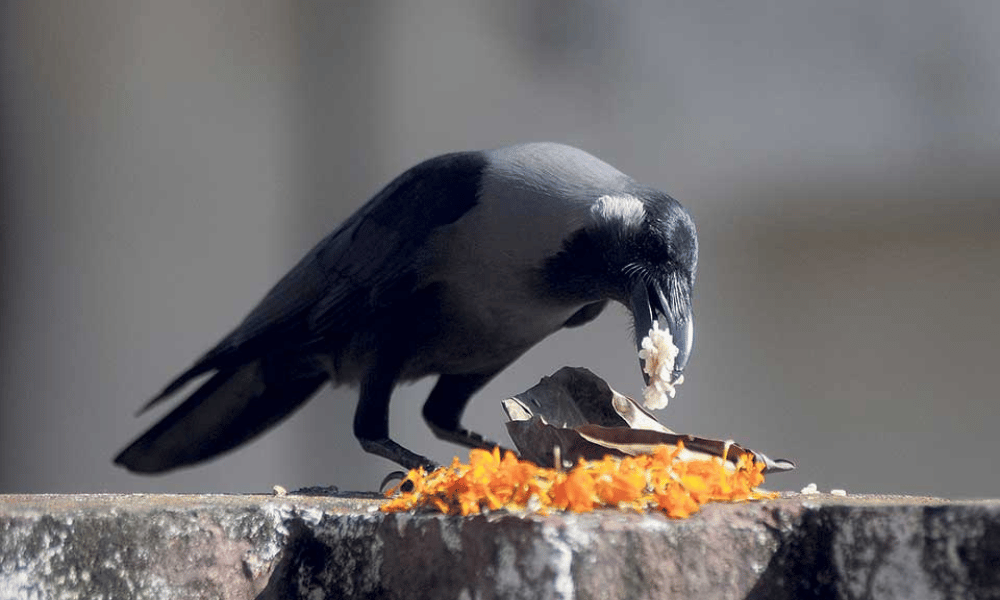
In addition to their spiritual symbolism, crows play an essential ecological role as scavengers, helping maintain a clean environment by consuming waste and dead organisms. Thus, Kaag Tihar serves to remind people of the importance of crows and their dual role in both mythology and the natural world.
Rituals and customs associated with Kaag Tihar
Kaag Tihar is celebrated on the first day of the Tihar Festival, during which crows are honored and worshipped. The rituals and customs associated with Kaag Tihar are as follows:
Early in the morning, family members gather to prepare offerings for the crows. These offerings typically include a variety of food items, such as sweets, fruits, nuts, and cooked rice.
The offerings are then placed on rooftops, balconies, or other elevated surfaces accessible to crows. It is believed that feeding crows on this day ensures that they will act as messengers to the afterlife, bringing blessings and good fortune to the family.
In some regions, people also create small shrines or platforms with flowers, incense, and water to honor the crows.
During the day, people avoid harming or disturbing crows, as a sign of respect and reverence towards these creatures.
By honoring crows during Kaag Tihar, people acknowledge their importance in Hindu mythology and the ecosystem, promoting a sense of harmony between humans, animals, and nature.
Kukur Tihar (Dog Day)
Dogs have a special place in Hinduism and Nepalese culture, symbolizing loyalty, devotion, and protection. They are regarded as the faithful companions of various deities, including Lord Shiva, who is often depicted with a dog by his side. In Hindu mythology, dogs are also associated with Lord Yama, the god of death, as they are believed to guard the gates of the afterlife. The bond between humans and dogs is celebrated during Kukur Tihar, emphasizing the importance of respecting and caring for these loyal companions.
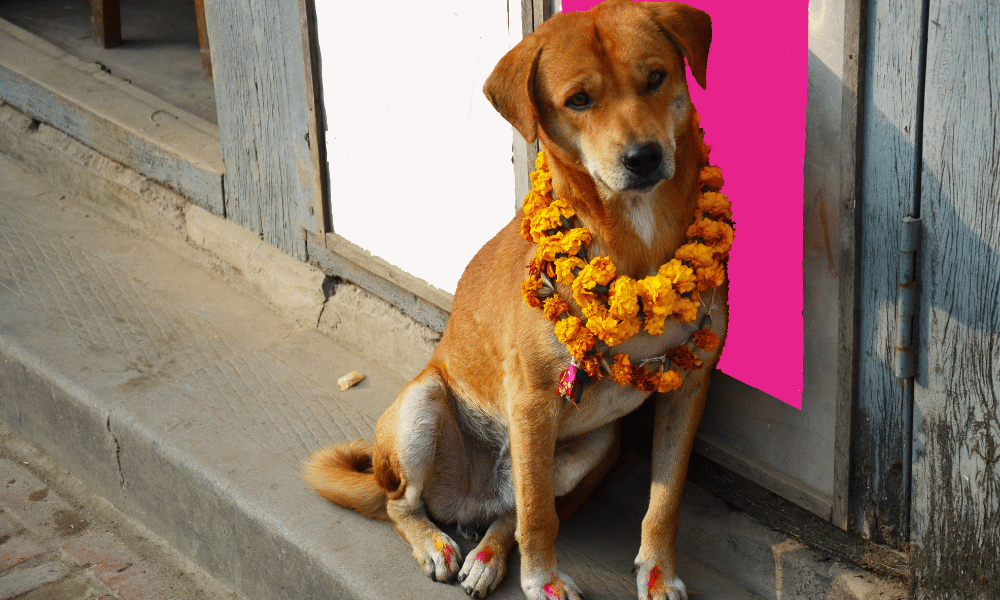
In addition to their spiritual significance, dogs have long been an integral part of Nepalese society, serving as protectors, herders, and companions. Kukur Tihar is an opportunity for people to express gratitude for the countless ways in which dogs contribute to human well-being and happiness.
Rituals and customs associated with Kukur Tihar
Kukur Tihar is observed on the second day of the Tihar Festival and is dedicated to honoring and worshipping dogs. The rituals and customs associated with Kukur Tihar are as follows:
On this day, both pet dogs and stray dogs are celebrated and honored. Family members prepare special offerings for the dogs, which may include a variety of food items, such as meat, milk, eggs, and other dog-friendly treats.
Dogs are adorned with garlands made from marigold flowers, known as "malla," which symbolize their sacred status and importance in the community. The garlands also serve as a gesture of gratitude and respect towards the dogs for their loyalty, companionship, and protection.
A Tika, a mixture of red vermilion, rice, and yogurt, is applied to the dogs' foreheads, signifying their sacred status and seeking their blessings for the family's well-being and prosperity.
In some communities, people light oil lamps near the dogs' resting places, symbolizing the dispelling of darkness and the guidance provided by these faithful companions.
By participating in the rituals and customs of Kukur Tihar, people express their appreciation for the invaluable role that dogs play in their lives, while also fostering a sense of harmony and respect between humans and animals.
Laxmi Puja (Goddess of Wealth and Prosperity)
Goddess Laxmi is a highly revered deity in Hinduism, symbolizing wealth, prosperity, abundance, and good fortune. She is the consort of Lord Vishnu, the preserver of the universe, and is believed to bestow her blessings upon those who diligently worship her. Laxmi Puja, observed on the third day of Tihar Festival, holds immense significance as it is dedicated to the worship of Goddess Laxmi, seeking her divine grace for material and spiritual prosperity.
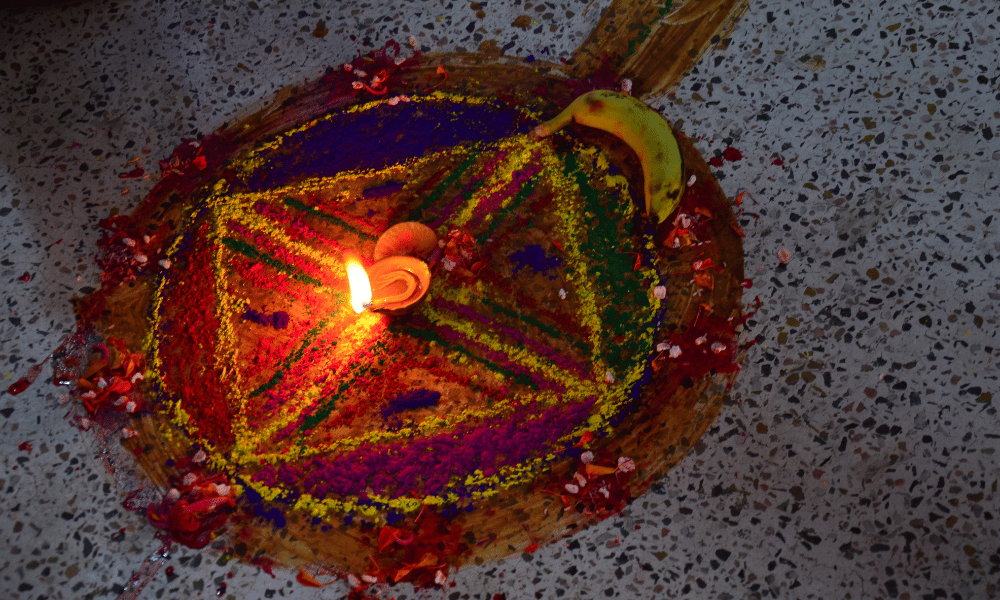
Rituals and customs associated with Laxmi Puja
Laxmi Puja is a time for families to come together and perform various rituals and customs to honor and worship Goddess Laxmi. Some of the key rituals and customs associated with Laxmi Puja include:
Thoroughly cleaning the home and its surroundings, as it is believed that Goddess Laxmi resides in clean and well-maintained spaces. This ritual is symbolic of purifying one's environment to invite positive energy and prosperity.
Creating intricate Rangoli designs at the entrance of the home, using colored powders, rice, or flower petals. These vibrant designs are believed to welcome Goddess Laxmi and bring good fortune.
Lighting oil lamps (diyas) and candles throughout the house, signifying the victory of light over darkness and inviting the divine light of Goddess Laxmi into the home.
Setting up a sacred altar with images or idols of Goddess Laxmi, along with offerings of flowers, incense, fruits, sweets, and coins. Families gather to perform prayers and recite hymns in praise of the goddess, seeking her blessings for wealth, success, and happiness.
In some communities, people also worship their business ledgers, tools, or equipment during Laxmi Puja, seeking the goddess's blessings for success and prosperity in their professional endeavors.
The tradition of playing Deusi-Bhailo
Deusi-Bhailo is a popular Nepalese tradition that takes place during the Tihar Festival, particularly on the night of Laxmi Puja. Groups of people, often young boys and girls, go door-to-door in their neighborhoods, singing traditional Deusi-Bhailo songs and dancing to the rhythm of musical instruments. The songs typically convey messages of good fortune, blessings, and happiness for the households they visit.
In return, homeowners offer the performers money, food, or other gifts as a token of gratitude and goodwill. The collected offerings are often used to organize community feasts or donated to charity. The Deusi-Bhailo tradition fosters a sense of unity, joy, and shared celebration among the members of the community.
Gobardhan Puja (Cow Day) and Mha Puja (Self-worship)
Cows hold a sacred status in Hinduism and are highly revered in Nepalese culture. They are considered the symbol of wealth, abundance, and fertility. Cows also represent motherhood, as they provide milk and nourishment, and are often referred to as "Gau Mata" or "Mother Cow." In Hindu mythology, cows are associated with Lord Krishna, who was a cowherd, and the deity Kamadhenu, the wish-fulfilling divine cow. Gobardhan Puja, observed on the fourth day of Tihar Festival, honors cows and their significance in Hinduism and Nepalese society.
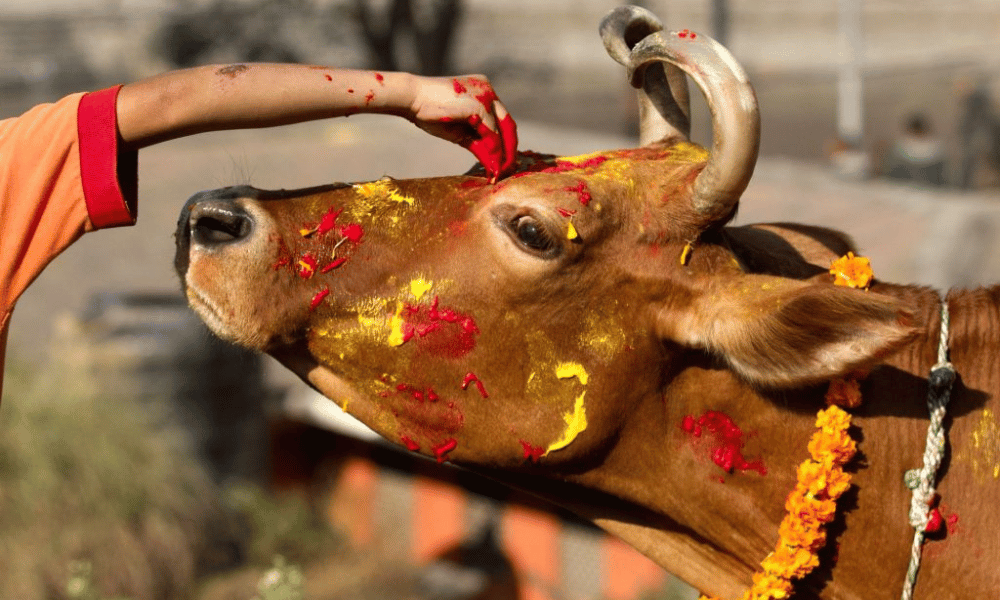
Rituals and customs associated with Gobardhan Puja
Gobardhan Puja involves various rituals and customs to honor and worship cows. Some of the key rituals associated with Gobardhan Puja include:
Bathing and grooming cows early in the morning, as a sign of respect and gratitude for their contributions to human life.
Adorning cows with garlands made from marigold flowers and applying a Tika (a mixture of red vermilion, rice, and yogurt) on their foreheads, symbolizing their sacred status and importance in the community.
Offering cows a special meal consisting of grass, grains, fruits, and other nutritious food items, as a token of appreciation for their role in providing sustenance and nourishment.
In some communities, people also create small mounds of cow dung, representing the Gobardhan Hill, and decorate them with flowers and colored powders. These mounds are then worshipped as a symbol of abundance and prosperity.
The concept of Mha Puja and its significance
Mha Puja, also observed on the fourth day of Tihar, is a unique tradition practiced mainly by the Newar community in Nepal. Mha Puja, which translates to "self-worship," is a ritual that focuses on honoring one's own body, mind, and soul, recognizing the divinity within each individual. This ritual encourages self-awareness, spiritual growth, and introspection.
During Mha Puja, family members gather and create a sacred space, often by drawing intricate mandalas on the floor using colored powders, rice, or flower petals. Each person sits on their designated spot within the mandala and is offered various items, including fruits, sweets, flowers, and a lighted oil lamp. These offerings symbolize prosperity, health, and spiritual illumination. The ritual also involves applying a Tika on one's own forehead and reciting prayers or mantras to invoke the divine energy within oneself.
The significance of Mha Puja lies in promoting self-care, self-love, and the realization of one's inner potential and divine nature. By acknowledging and honoring the divine within, individuals are encouraged to cultivate positive qualities, such as compassion, kindness, and wisdom, ultimately contributing to their overall well-being and personal growth.
Bhai Tika (Brother-Sister Day)
Bhai Tika, observed on the fifth and final day of the Tihar Festival, is a special occasion that celebrates the bond between brothers and sisters. It is a day dedicated to strengthening the love, support, and connection between siblings, emphasizing the importance of family relationships. Bhai Tika serves as an opportunity for brothers and sisters to come together, express their affection for each other, and renew their commitment to support and protect one another.
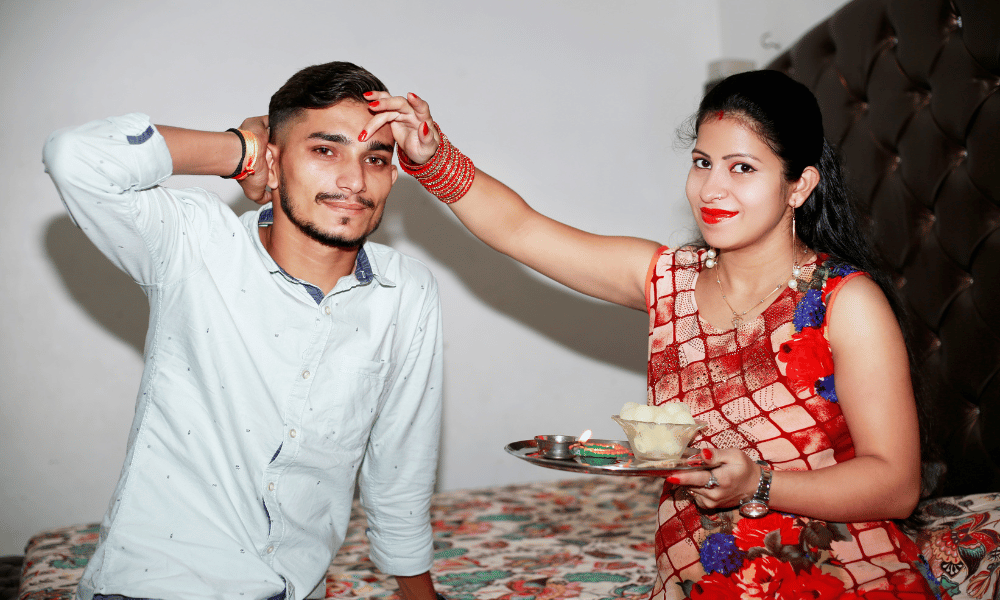
Rituals and customs associated with Bhai Tika
The rituals and customs of Bhai Tika are centered around the relationship between brothers and sisters. Some of the key rituals associated with Bhai Tika include:
Sisters prepare a sacred space, often by drawing intricate designs or mandalas on the ground using colored powders, rice, or flower petals. This space serves as the setting for the Bhai Tika ceremony.
Sisters apply a Tika (a mixture of red vermilion, rice, and yogurt) on their brothers' foreheads, signifying the bond between siblings and seeking divine blessings for their brothers' health, happiness, and prosperity.
A garland made of marigold flowers, called "malla," is placed around the brothers' necks as a symbol of love, respect, and protection.
Sisters offer various food items to their brothers, including fruits, sweets, and homemade delicacies, symbolizing love and nurturing.
In return, brothers also apply a Tika on their sisters' foreheads and present them with gifts, expressing their gratitude and love for their sisters.
The exchange of gifts and blessings
The exchange of gifts and blessings during Bhai Tika is an important aspect of the celebration, fostering a sense of mutual love, support, and appreciation between siblings. Brothers typically offer gifts to their sisters, which may include clothes, jewelry, or other tokens of affection, symbolizing their commitment to protect and care for their sisters. In return, sisters bless their brothers with wishes for a long, healthy, and prosperous life.
The exchange of gifts and blessings during Bhai Tika helps to reinforce the sibling bond, create lasting memories, and ensure the continuation of this cherished tradition in the family and community.

The Aesthetic Elements of Tihar Festival
The aesthetic elements of Tihar Festival, such as Rangoli and the use of lights and diyas, add vibrancy and beauty to the celebrations. Rangoli, an art form involving intricate, colorful designs made from colored powders, rice, or flower petals, symbolizes good fortune and spiritual purity. Lights and diyas, an essential part of the festivities, represent the triumph of light over darkness and the dispelling of ignorance. These aesthetic elements not only enhance the visual appeal of the festival but also carry deep symbolic significance, embodying the core values and spiritual essence of Tihar, while contributing to the joyous and festive atmosphere.
A. Rangoli and its cultural significance
Rangoli is a traditional Indian art form that involves creating intricate and colorful designs on the ground using materials like colored powders, rice, flower petals, or even chalk. The art of Rangoli has been practiced for centuries across India and Nepal, particularly during festivals and celebrations. Rangoli designs are often symmetrical, featuring geometric patterns, floral motifs, or depictions of deities and other auspicious symbols.
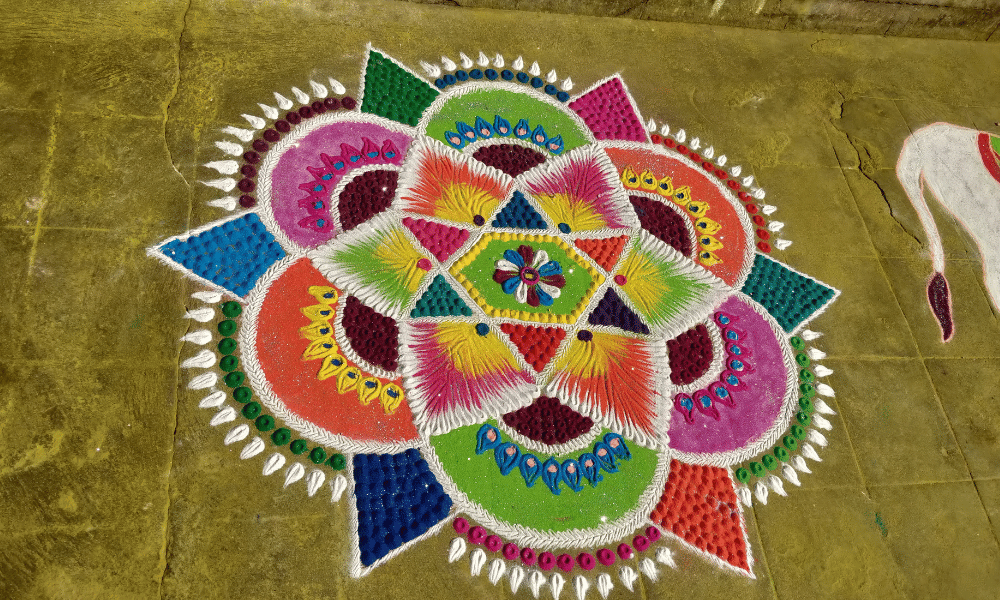
The process of creating Rangoli requires skill, patience, and creativity, as artists carefully arrange the materials to form detailed and visually stunning designs. In many cases, creating Rangoli is a collaborative effort, with family members or community members working together to develop and execute the design.
The symbolism of Rangoli in Tihar
During the Tihar Festival in Nepal, Rangoli plays a significant role in the celebrations, particularly on the third day, Laxmi Puja. Rangoli designs are created at the entrance of homes, courtyards, or even inside the house, with the primary purpose of welcoming Goddess Laxmi, the goddess of wealth and prosperity, into the home.
The symbolism of Rangoli in Tihar goes beyond its association with Goddess Laxmi. It is also seen as a representation of the vibrant and colorful nature of the festival itself, reflecting the joy and happiness associated with the celebrations. Additionally, Rangoli designs are believed to bring good fortune and positive energy, warding off evil spirits and negativity.
Creating Rangoli during Tihar is also a way for people to express their creativity and showcase their artistic skills, while also fostering a sense of unity and collaboration among family members and the community. In this way, Rangoli serves as both a form of artistic expression and a symbol of cultural and spiritual significance during the Tihar Festival.
B. The importance of lights and diyas
Light plays a crucial role in the Tihar Festival, symbolizing the victory of light over darkness, knowledge over ignorance, and good over evil. In Hinduism, light is often associated with divine energy, wisdom, and spiritual enlightenment. During Tihar, the use of lights and diyas (traditional oil lamps) helps to create a festive atmosphere and serves as a reminder of the spiritual significance of the celebration.
By illuminating their homes and surroundings with lights, people create an environment of positivity, warmth, and joy. The light is believed to attract the blessings of the deities, particularly Goddess Laxmi, who is said to favor well-lit and clean spaces. Moreover, the presence of light is thought to ward off negative energies and evil spirits, promoting harmony and well-being within the household and the community.
The tradition of lighting diyas and candles during Tihar
Lighting diyas and candles is an integral part of the Tihar Festival, and various rituals and customs revolve around the use of light. Some of the key aspects of the tradition include:
On Laxmi Puja, the third day of Tihar, families light diyas and candles throughout their homes to welcome Goddess Laxmi and seek her blessings for prosperity and abundance.
In addition to diyas and candles, people may also use decorative electric lights, lanterns, or even firecrackers to illuminate their homes and surroundings.
On Kukur Tihar (Dog Day), some communities light oil lamps near the resting places of dogs as a symbol of guidance and protection provided by these faithful companions.
During Bhai Tika (Brother-Sister Day), sisters light an oil lamp during the Tika ceremony, signifying the warmth and light of their love and support for their brothers.
The tradition of lighting diyas and candles during Tihar not only adds to the festive ambiance but also serves as a visual reminder of the spiritual values and beliefs at the heart of the celebration. By participating in this tradition, individuals connect with the deeper meanings of Tihar and strengthen their connection to their faith and community.
C. Traditional Tihar songs and dances
Deusi-Bhailo is a traditional Nepalese musical performance that plays a prominent role during the Tihar Festival, particularly on the night of Laxmi Puja. Groups of people, often young boys and girls, form troupes and go door-to-door in their neighborhoods, singing traditional Deusi-Bhailo songs and dancing to the rhythm of musical instruments such as the Madal (a type of drum) and harmonium.
The songs typically convey messages of good fortune, blessings, and happiness for the households they visit. The performers are warmly welcomed, and in return for their performance, homeowners offer them money, food, or other gifts as a token of gratitude and goodwill. The collected offerings are often used to organize community feasts or donated to charity.
The Deusi-Bhailo tradition is significant because it fosters a sense of unity, joy, and shared celebration among the members of the community. It encourages social interaction, strengthens relationships, and helps preserve the cultural heritage of Nepal.
Other popular songs and dances during the festival
Apart from Deusi-Bhailo, there are several other popular songs and dances associated with the Tihar Festival. Some of these include:
Mha Puja songs: During Mha Puja, the Newar community sings traditional Newari songs to celebrate the occasion. These songs are often accompanied by traditional musical instruments like the dhime (a Newari drum) and the taa (cymbals).
Tihar folk songs: Various folk songs are sung during different days of the Tihar Festival, reflecting the diverse customs and traditions of the Nepalese people. These songs convey stories, legends, and the cultural significance of the festival.
Traditional dances: Along with songs, traditional dances also form an integral part of Tihar celebrations. Each ethnic community in Nepal has its unique dance forms and styles that they showcase during the festival, expressing their cultural identity and adding to the richness of the celebrations.
The songs and dances of Tihar not only provide entertainment and enjoyment but also help preserve and promote the rich cultural heritage of Nepal. They bring people together, instill a sense of pride in their traditions, and create lasting memories of the celebrations.
Tihar Festival Food and Delicacies
Tihar Festival is renowned for its array of delicious traditional foods and delicacies that add to the celebratory atmosphere. Some of the most popular treats include Sel Roti, a deep-fried, ring-shaped rice flour bread; Anarsa, a sweet made from rice flour and jaggery; and Laakhamari, a visually stunning sweetened flour dessert crafted into intricate designs. These culinary offerings not only delight the taste buds but also serve as symbols of love, affection, and the sharing of joy. The preparation and consumption of these delicacies during Tihar strengthen bonds between family members, friends, and the community while preserving and promoting Nepal's rich culinary heritage.
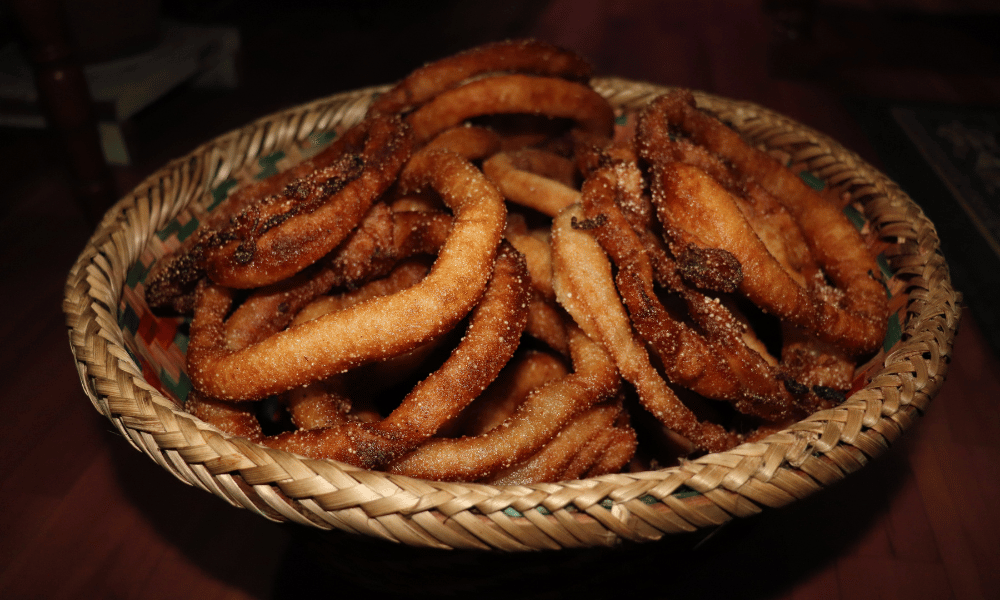
A. Sel Roti (Rice flour bread)
Sel Roti is a traditional Nepalese delicacy that is commonly prepared during the Tihar Festival. It is a deep-fried, ring-shaped bread made from rice flour, sugar, milk, and spices like cardamom and cinnamon. The mixture is poured into hot oil using a funnel or a cloth with a hole, creating a circular shape. The result is a crispy, golden-brown bread with a soft, slightly sweet interior. Sel Roti is often served with yogurt or vegetable curry and is enjoyed as a snack or breakfast item during the festival.
B. Anarsa (Rice flour and jaggery sweet)
Anarsa is a sweet treat made from rice flour, jaggery (unrefined sugar), and ghee (clarified butter). The ingredients are combined to form a dough, which is then shaped into small discs and deep-fried in ghee until golden brown. Anarsa has a slightly crunchy exterior and a soft, sweet, and melt-in-your-mouth texture. It is a popular dessert during Tihar and is often shared among family members and friends as a symbol of love and affection.
C. Laakhamari (Sweetened flour twisted into intricate shapes)
Laakhamari is a traditional Nepalese sweet that is often prepared during Tihar and other festivities. Made from sweetened flour, Laakhamari is shaped into intricate and artistic designs before being deep-fried and glazed with sugar syrup. The result is a visually stunning and delicious treat that is enjoyed by people of all ages. Laakhamari is often exchanged as a gift during Tihar, symbolizing goodwill and the sharing of joy.
D. The importance of vegetarian food during the festival
During Tihar, it is customary for many families to observe a vegetarian diet, abstaining from meat and alcohol. This practice is rooted in the festival's focus on purity, spirituality, and the reverence for life. By consuming vegetarian food, individuals honor the bond between humans, animals, and nature, emphasizing the need for compassion and respect for all living beings. Vegetarian dishes, including various lentil, vegetable, and rice preparations, form an essential part of the Tihar feast.
E. The role of food in Tihar celebrations
Food plays a central role in Tihar celebrations, serving as a means to bring people together, express love and gratitude, and share blessings. Traditional dishes and sweets are prepared with great care and attention, using recipes passed down through generations. These delicacies are not only enjoyed by family members but are also offered to deities, animals, and visitors during the festival, symbolizing hospitality, generosity, and the sharing of joy. The act of preparing and sharing food during Tihar strengthens bonds between family members, friends, and the community, while also preserving and promoting the rich culinary heritage of Nepal.
Related Blog: Nepalese Food
The Impact of Tihar Festival on Nepalese Society and Tourism
The Tihar Festival, a significant celebration in Nepal, greatly impacts Nepalese society and tourism. The festivities, deeply rooted in the country's cultural heritage, contribute to the preservation and promotion of traditions and values, while also strengthening community bonds. The economic impact of Tihar is evident in the boost it provides to local businesses, markets, and the tourism sector. The festival attracts both domestic and international tourists who come to witness and participate in the unique customs and celebrations. Overall, Tihar Festival plays a vital role in fostering unity, shared joy, and a sense of national pride, while bolstering Nepal's economy and raising global awareness of its rich cultural legacy.
A. The economic impact of Tihar Festival
Boost in local businesses and markets
The Tihar Festival has a significant impact on the local economy in Nepal. As one of the most important and widely celebrated festivals, Tihar sees a surge in consumer spending as people purchase items such as decorations, lights, candles, diyas, gifts, clothes, and food. Local businesses and markets benefit from this increased demand, leading to higher sales and profits during the festival season.
In addition to retail businesses, Tihar also provides opportunities for small-scale entrepreneurs and artisans, who create and sell traditional handicrafts, decorative items, and festive food products. These individuals benefit from the increased interest in cultural and traditional items during the Tihar celebrations.
The festival's influence on tourism
Tihar also plays a role in promoting tourism in Nepal. The vibrant festivities, rich cultural traditions, and unique customs associated with Tihar attract both domestic and international tourists, who come to witness and participate in the celebrations. This influx of visitors boosts the tourism sector, with hotels, restaurants, and tour operators experiencing increased demand during the festival period.
Furthermore, the Tihar Festival helps to raise global awareness of Nepal's culture and heritage, drawing the attention of potential tourists and encouraging future travel to the country. The festival's positive impact on tourism contributes to the overall growth and development of the Nepalese economy, creating opportunities for local businesses and communities.
B. The cultural impact of Tihar Festival
The Tihar Festival plays a crucial role in preserving and promoting the rich cultural heritage of Nepal. The various customs, rituals, and traditions associated with the festival are deeply rooted in Nepalese history and folklore, reflecting the diverse beliefs and practices of the people. By celebrating Tihar, individuals not only honor their cultural roots but also pass on these traditions to future generations, ensuring their continued survival and relevance.
Moreover, Tihar serves as a platform for showcasing the unique cultural aspects of Nepal, such as traditional music, dance, art, and food. These elements of the festival contribute to a sense of national pride and identity, helping to foster a greater appreciation for the country's heritage and distinctiveness.
Strengthening of community bonds and relationships
Tihar has a significant impact on community bonds and relationships, promoting unity, cooperation, and goodwill among the people. The festival encourages social interaction and mutual support, as neighbors, friends, and family members come together to prepare for and participate in the celebrations.
Activities such as Deusi-Bhailo performances and the exchange of gifts and blessings during Bhai Tika further strengthen interpersonal relationships, fostering a sense of belonging and shared joy. The festival also serves as an opportunity for reconciliation and the mending of strained relationships, as the spirit of Tihar encourages forgiveness, compassion, and understanding.
The emphasis on honoring and respecting the bond between humans, animals, and nature during Tihar also contributes to a greater sense of community and interconnectedness. By celebrating these relationships, individuals recognize the importance of treating all living beings with kindness and respect, reinforcing values that are essential for harmonious living and the well-being of society.
In conclusion, the Tihar Festival in Nepal is a vibrant and deeply significant celebration that showcases the rich cultural heritage and spiritual values of the country. With its unique customs, rituals, and traditions, the festival honors the interconnectedness of humans, animals, and nature, promoting unity, love, and gratitude within the community. The aesthetic elements, traditional foods, and the focus on relationships further enhance the joyous atmosphere of Tihar.
Experiencing the Tihar Festival in Nepal is an unforgettable opportunity to immerse oneself in the country's rich culture and traditions, while witnessing the warmth and unity of the Nepalese people. We encourage readers to consider visiting Nepal during the Tihar Festival to participate in this extraordinary celebration, which offers a deeper understanding of the values and beliefs that shape the nation's identity and fosters a sense of global interconnectedness.
Would you like to book an activity or a trip with us?
Get in touch with our experts right away and finalize an experience!
Call Us Now
Frequently asked questions.
Tihar Festival, also known as Deepawali or Diwali in Nepal, is a five-day Hindu festival celebrated in Nepal. It is a time to honor the relationships among humans, animals, and nature, as well as the victory of good over evil.
Tihar Festival is usually celebrated in October or November, depending on the lunar calendar. The specific dates vary each year.
Rangoli is an art form involving intricate, colorful designs made from colored powders, rice, or flower petals. It symbolizes good fortune and spiritual purity during the Tihar Festival.
Some popular Tihar Festival foods and delicacies include Sel Roti (rice flour bread), Anarsa (rice flour and jaggery sweet), and Laakhamari (sweetened flour twisted into intricate shapes).
The five days of Tihar Festival are:
Lights and diyas play an essential role in the Tihar Festival, symbolizing the triumph of light over darkness and the dispelling of ignorance. They are used to decorate homes and public spaces during the celebrations.
The Tihar Festival attracts both domestic and international tourists who come to witness and participate in the unique customs and celebrations. This influx of visitors boosts the tourism sector, with hotels, restaurants, and tour operators experiencing increased demand during the festival period.
BLOGS & TRAVEL STORIES
our first-hand Himalayan travel experience

Travel Guides & Tips
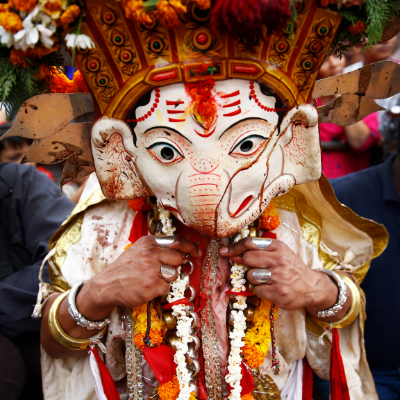
Travel Stories
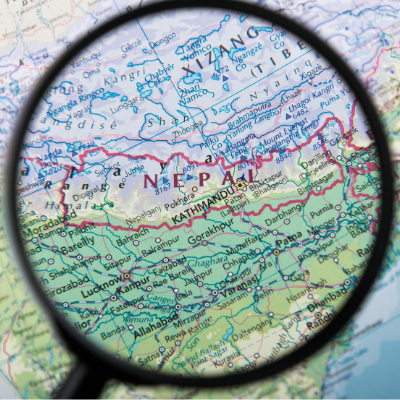
Latest Travel News
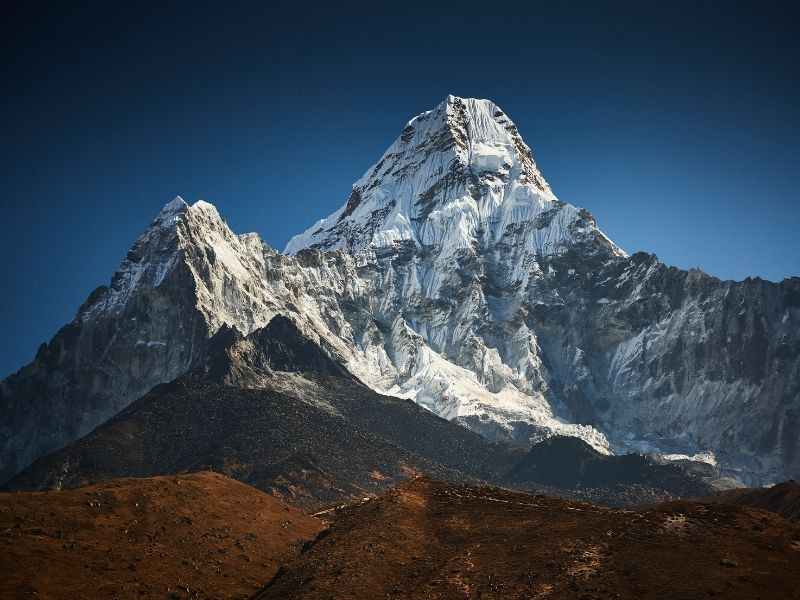
Mount Everest Region

World Heritage Sites
Cookies & privacy policy.
This website uses cookies to improve your experience. Learn More
Nepal’s Top Lists
Tihar – Dipawali (दीपावली) | Essay On Tihar
- November 6, 2018
Tihar, Bhai Tika, Dipawali, Yamapanchak, Diwali, Laxmi puja are often used interchangeably to mean Tihar. The essence of Tihar lies in the traditional way of celebration and ancient stories that compels us to believe and continue the amazing culture of celebration. Tihar is celebrated for five days with a great significance of each day. Dipawali signifies victory of light over darkness, good over evil, knowledge over ignorance and hope over despair.
Based on legends the festival is celebrated remembering Yamuna’s (a sister) dedication and prayer to protect her brother from the God of death, Yamaraj. To prevent Yamaraj from taking her brother’s life, she performed a five-day ritual. The very first day she worshiped crow, the messenger of Yamaraj, on the second-day “dog”, the carrier of Yamaraj. On the third day, she worshipped Goddess Laxmi for the prosperity of the family along with cow as a representation of Goddess. The next day she prepared a large variety of dishes to offer to Yamaraj as a symbol of appreciation Govardhana puja which is also known as Annakut (Mountain of food). And the final day is Bhai Tika, Yamuna worshipped and fasted for her brother.
She prepared garland of Glove Amaranth flower (commonly known as Makhamali phool and Supari phool), A flower that never wears out, along with oil, Dubo (evergreen perennial green grass), Walnut Tika for the protection and most importantly Saptarangi Tika (Pigments of 7 different colors). She Broke Walnut before the ritual to constrict external bodies and bad omen from entering the house. She performed and created the ritual with much dedication and asked Yamaraj not to take her brother’s life until the garland of Makhamali wears out. By her efforts, Yamaraj was so impressed that he let her brother live a peaceful life. She set an example of true love. and the same tradition continues even today.
Also Read: Bada Dashain
Tags: bhai tika essay on tihar laxmi puja mantra tihar festival nepal
You may also like...

- Best Phone Under 5000 in Nepal

Best Latest Nepali Songs of 2075 | Top 5 Nepali Pop Songs 2075

Free Nepali Full Movies | Best Nepali Film To Watch
- Pingbacks 1
[…] Tihar, Bhai Tika, Dipawali, Yamapanchak, Diwali, Laxmi puja are often used interchangeably to mean another biggest festival of Nepal i.e Tihar. The essence of Tihar lies in the traditional way of celebration and ancient stories that compels us to believe and continue the amazing culture of celebration. Tihar is celebrated for five days with a great significance of each day. Dipawali signifies victory of light over darkness, good over evil, knowledge over ignorance and hope over despair. Read More….. […]
- Next Mardi Trek in Nepal: A Complete Guide
- Previous Bada Dashain | Hindus Biggest Festival
- Entertainment
- Information
- Photography
- Price In Nepal
Recent Posts
- Best Phone Under 10000 in Nepal
- Best Phone Under 50000 in Nepal
- Best Mobile Phones Under 15000 in Nepal
- Best phones Under 20000 in Nepal
Ace the Himalaya
Trekking in Nepal, Peak Climbing, Mt Biking and Tours in Nepal, Bhutan and Tibet
- Everest Base Camp Trek - 14 Days
- EBC Trek with Helicopter Return - 12 Days
- Everest Base Camp Luxury Trek - 14 Days
- Everest Base Camp with Island Peak - 19 Days
- Everest Three Passes Trek - 20 Days
- Annapurna Base Camp Trek - 13 Days
- Annapurna Circuit Trek - 19 Days
- Ghorepani Poon Hill Trek - 9 Days
- Manaslu Circuit Trek - 15 Days
- Gokyo to Everest Base Camp Trek - 17 Days

Dashain and Tihar (Greatest Festivals of Nepalese)
Nepal is a country rich in culture and traditions. The varieties of festivals and occasions we celebrate carry their own significance. The main festivals of Nepalese are the Dashain and the Tihar which they choose to celebrate with their close friends, relatives and family.
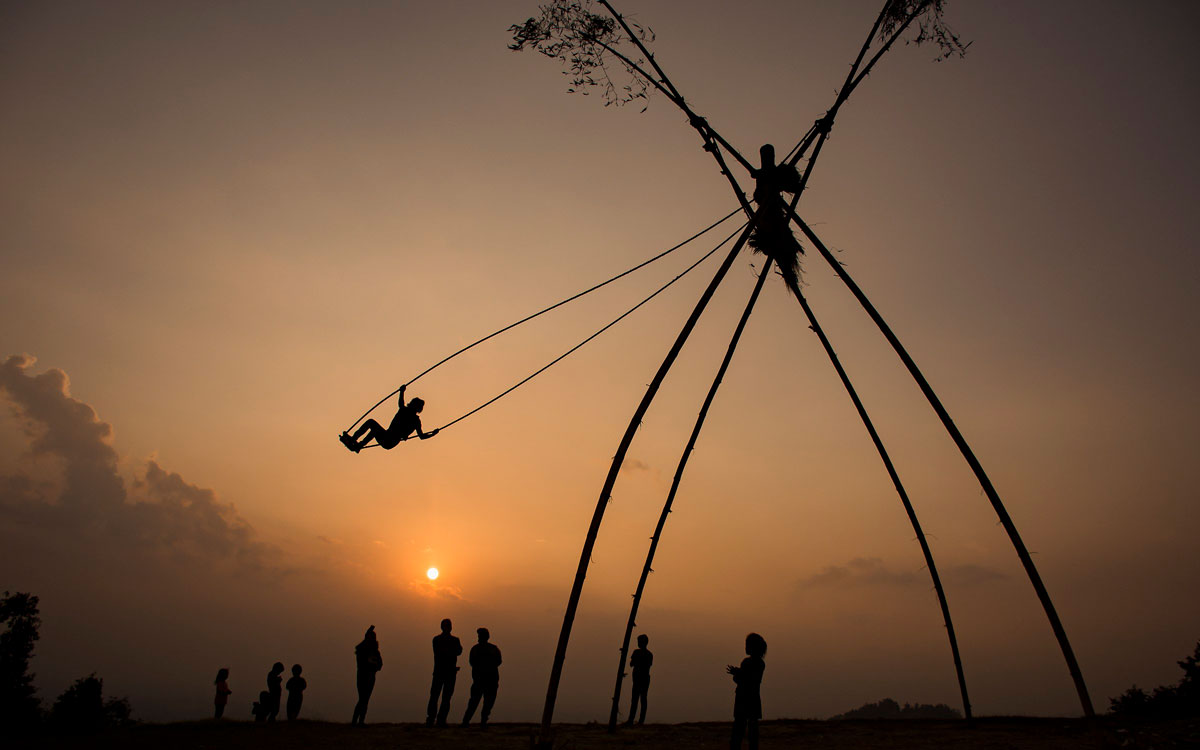
Dashain “The Greatest Festival of Nepalese”
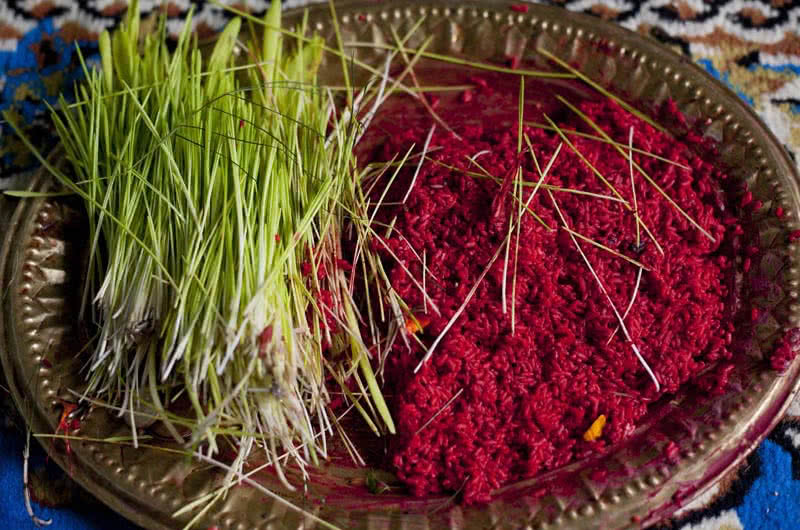
Among the festivals we celebrate, Dashain being the greatest one for Nepalese is always celebrated with the zeal and in joyful ways. It is celebrated almost for 15 days in the month of October; 1st, 7th, 8th, 9th and 10th days are the most important.
The 1st day is welcomed following the rituals of ‘Ghatsthapana’ by worshiping Goddess Durga for 9 consecutive days. The main day is called ‘Dashami’ which is also known as ‘Vijaya Dashami’, the day when Goddess Durga got victory over the demons. On this day the seniors of the family put ‘Tika’ and ‘Jamara’ giving blessings to their younger ones.
The special money given to the younger ones is received as ‘Dakchhina’. This day is like a family reunion where everyone enjoys with the varieties of food, playing cards, flying kites, etc. Dashain not only reunites the families and friends but it also gives the working people time to relax and enjoy with family.
Day 1 – Ghatasthapana: Invocation of Goddess Shailaputri:
Ghatasthapana marks the initiation of Dashain with the establishment of the sacred kalash (water-filled vessel). Goddess Shailaputri, the first manifestation of Goddess Durga, is worshipped on this day. She represents new beginnings and embodies the power of nature. Devotees seek her blessings for a prosperous and fruitful festival.
Day 2 – Dwitiya: Adoration of Goddess Brahmacharini:
On Dwitiya, Goddess Brahmacharini is revered. She symbolizes dedication, purity, and self-discipline. Worshipping her encourages devotees to embrace righteous paths and attain spiritual enlightenment.
Day 3 – Tritiya: Devotion to Goddess Chandraghanta:
Goddess Chandraghanta, worshipped on Tritiya, showcases her bravery and grace. Her half-moon-adorned forehead inspires courage. By honoring her, individuals seek protection from negativities and inner strength to overcome challenges.
Day 4 – Chaturthi: Reverence for Goddess Kushmanda:
Chaturthi is dedicated to Goddess Kushmanda, the creator of the universe. She radiates cosmic energy and blesses devotees with vitality and well-being. Her worship signifies the importance of energy and life force.
Day 5 – Panchami: Praise of Goddess Skandamata:
Goddess Skandamata, worshipped on Panchami, is the mother of Lord Skanda (Kartikeya). She represents motherly love and protection. Devotees seek her blessings for nurturing relationships and safeguarding their loved ones.
Day 6 – Shashthi: Reverence for Goddess Katyayani:
Goddess Katyayani, revered on Shashthi, epitomizes strength and courage. She is the warrior goddess who defeats evil forces. Worshipping her instills determination and the will to overcome adversities.
Day 7 – Saptami: Adoration of Goddess Kalaratri:
Goddess Kalaratri, worshipped on Saptami, embodies the fierce and destructive form of Durga. She annihilates darkness and negativity, paving the way for light and positivity in life. Her worship symbolizes the victory of good over evil.
Day 8 – Ashtami: Worship of Goddess Mahagauri:
On Ashtami, Goddess Mahagauri is venerated. She radiates purity and grace, signifying the triumph of righteousness. Her worship purifies the mind and soul, granting inner peace and spiritual growth.
Day 9 – Navami: Devotion to Goddess Siddhidatri:
Goddess Siddhidatri, worshipped on Navami, grants divine knowledge and spiritual enlightenment. She blesses devotees with achievements and accomplishments, both material and spiritual. Her worship symbolizes the culmination of the Navadurga manifestations.
Day 10 – Dashami (Vijaya Dashami): Celebration of Goddess Durga’s Victory:
Vijaya Dashami is the pinnacle of Dashain, honoring Goddess Durga’s victory over the demon Mahishasura. She represents the ultimate power of femininity and the vanquisher of evil forces. On this day, families come together to seek her blessings through the Tika and Jamara ceremony, symbolizing the triumph of good over evil.
Tihar “The Festival of Lights”
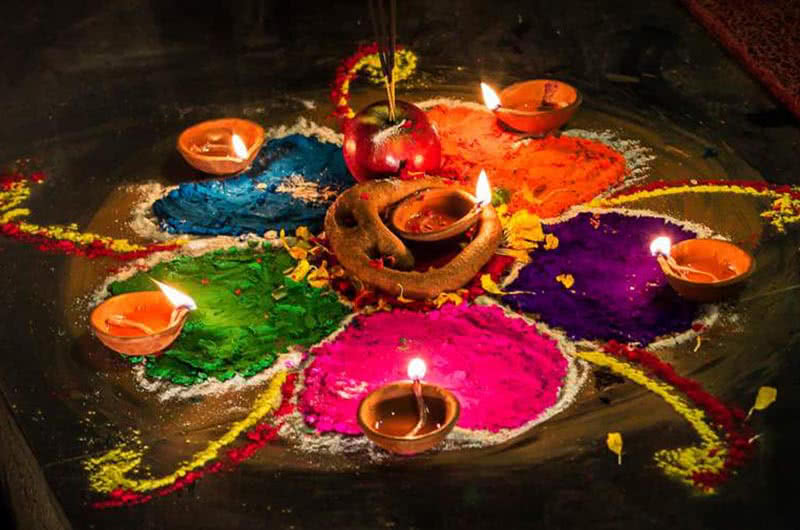
The festival usually falls in the month of October or November, celebrated for five days worshiping 4 different animals i.e. Kaag Tihar (Crow Tihar), Kukur Tihar (Dog Tihar), Gai Tihar (Cow Tihar)- the main day to worship the goddess of wealth, Laxmi, Goru Tihar (Ox Tihar) and the 5th day is celebrated as ‘ Bhaitika ’ which signifies and carries great importance for the love and concern between brothers and sisters.
The sisters put the seven colors Tika on the brother’s forehead and pray for their longer life and progress. Tihar always brings excitement and jolly mood in the families and friends; playing ‘Deusi-bhailo’ and trying the best to welcome goddess Laxmi, who is believed to bring the happiness and wealth in the life of everyone.
Related Blogs & Articles
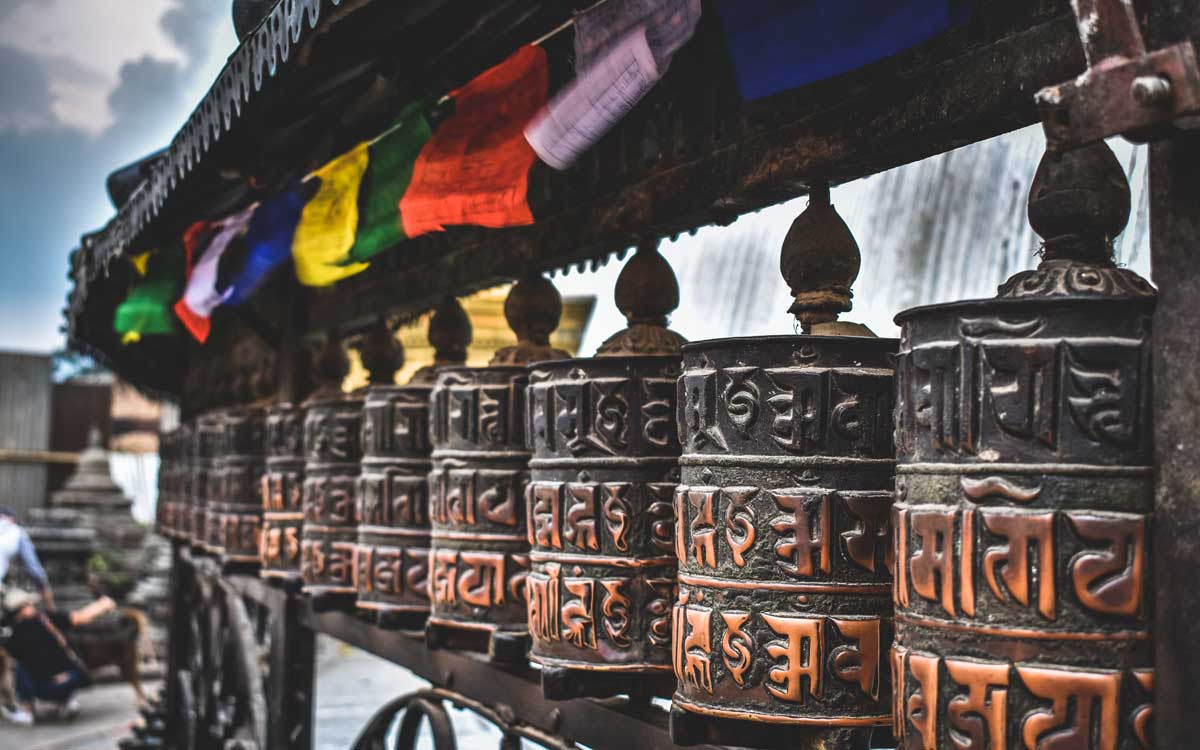
Kathmandu Valley- A City of Myths
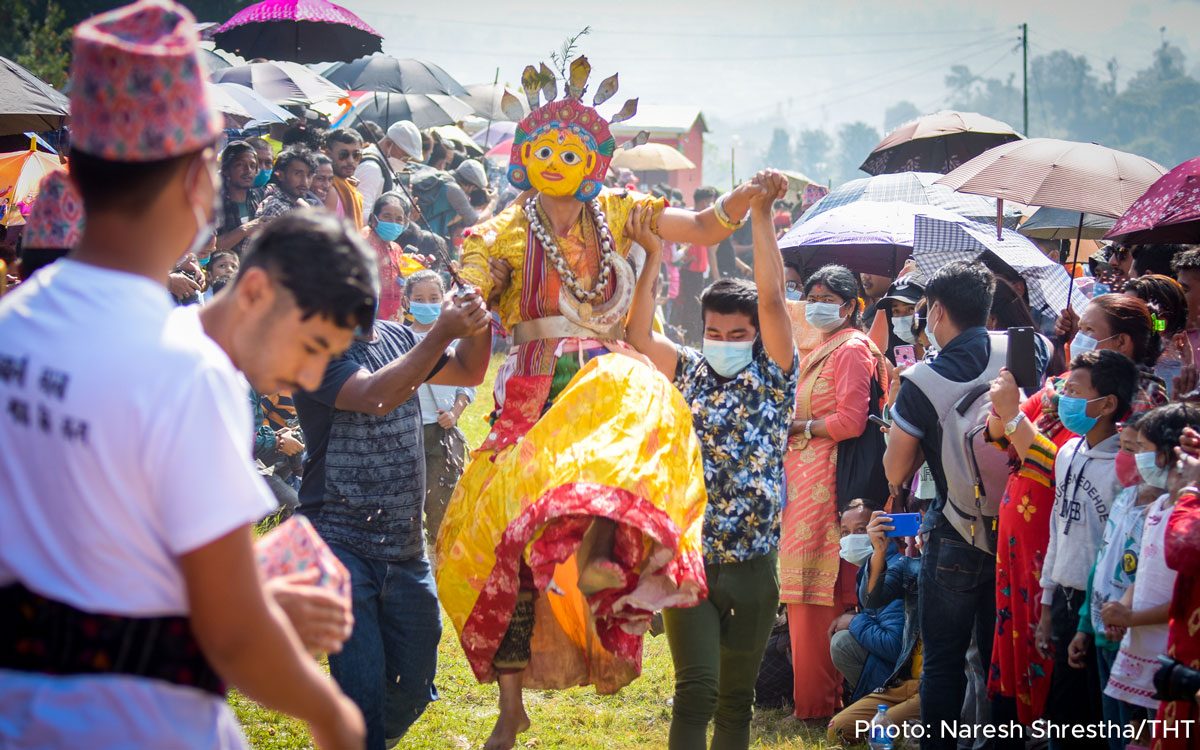
Shikali Jatra in Khokana
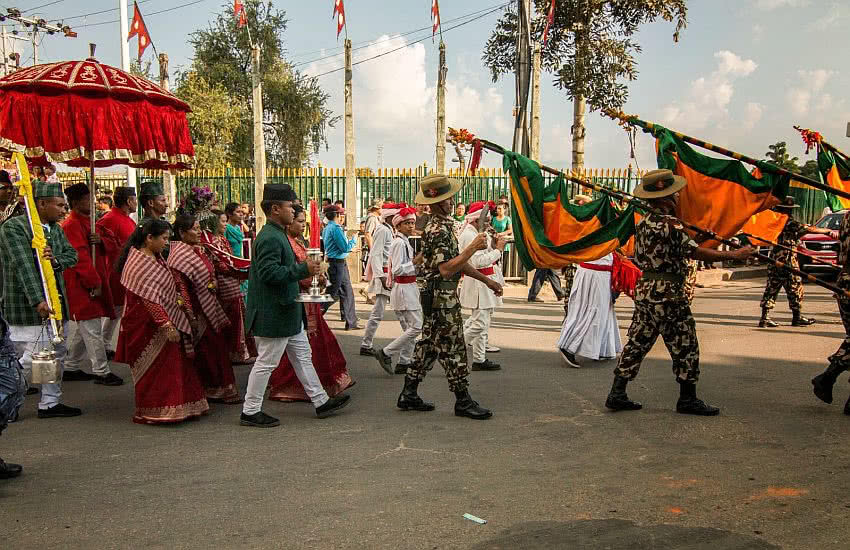
Dashain – Celebrating Victory of Good over Evil

- Phone This field is for validation purposes and should be left unchanged.
Trekking in Nepal
Climbing and expedition, cultural tour and sightseeing, cycling and mountain biking, luxury treks, luxury tours, multi country tours, voluntourism trips, extend your trip.
- Everest Panorama Trek – 9 Days
- EBC Trek with Helicopter Return – 12 Days
- Everest Base Camp Trek – 14 Days
- Gokyo Lake Trek – 13 Days
- Gokyo and Renjo La Pass Trek – 14 Days
- Everest Base Camp Trek without Lukla Flight – 17 Days
- Gokyo to Everest Base Camp Trek – 17 Days
- Everest Base Camp with Island Peak – 19 Days
- Everest Three Passes Trek – 20 Days
- Everest High Passes and Island Peak – 23 Days
- Classical Everest Base Camp Trek – 21 Days
- Langtang Valley Trek – 10 Days
- Langtang Valley Ganja La Pass Trek – 14 Days
- Langtang Helambu Trek – 17 Days
- Ghorepani Poon Hill Trek – 9 Days
- Mardi Himal Trek – 10 Days
- Annapurna Base Camp Trek – 13 Days
- Himalayan Highlights – 13 Days
- Nar Phu Valley Trek with Annapurna Circuit – 18 Days
- Annapurna Circuit Trek – 19 Days
- Tilicho Lake Trek With Thorong La Pass – 19 Days
- Khopra Danda Trek – 11 Days
- Shivapuri-Chisapani Trek – 4 Days
- Upper Mustang Trek (Drive & Trek) – 16 Days
- Tsum Valley Trek – 16 Days
- Manaslu Circuit Trek – 15 Days
- Dhaulagiri Circuit Trek – 21 Days
- Upper Dolpo Trek – 25 Days
- Kanchenjunga Base Camp Trek – 29 Days
- Yala Peak Climbing – 13 Days
- Island Peak Climbing – 15 Days
- Mera Peak Climbing – 19 Days
- Everest Base Camp and Lobuche East – 18 Days
- Tent Peak Climbing with Annapurna Base Camp – 18 Days
- Pisang Peak and Thorung La Pass – 21 Days
- Ama Dablam Expedition – 29 Days
- Kathmandu Cultural Heritage Tour – 3 Days
- Kathmandu Heritage – 3 Days
- Inheritances of Kathmandu – 4 Days
- Glimpses of Kathmandu & Nagarkot – 5 Days
- Kathmandu and Pokhara Unveiled – 5 Days
- Explore Kathmandu – 6 Days
- Glimpse of Nepal – 8 Days
- Nepal Heritage Tour – 10 Days
- Nepal Adventure Tour – 11 Days
- Nepal Multi Sports Adventure – 11 Days
- Nepal Vista – 10 Days
- Nepal Highlights – 14 Days
- Experience Nepal – 15 Days
- One Day Biking Trip – Kathmandu – 1 Day
- Annapurna Circuit Biking – 14 Days
- Upper Mustang Biking – 16 Days
- Kathmandu Valley Rim Biking – 8 Days
- Annapurna in Luxury – 9 Days
- VVIP Everest Base Camp Trek – 10 Days
- Everest View Luxury Trek – 11 Days
- Everest Base Camp Luxury Trek – 14 Days
- Everest Base Camp Deluxe Trek – 16 Days
- Mt Everest Base Camp to Gokyo Trek – 19 Days
- Kathmandu Luxury Tour – 3 Days
- Kathmandu and Pokhara Luxury Tour – 5 Days
- Nepal Multi Sport Luxury Adventure – 11 Days
- Best of Nepal – 14 Days
- Trishuli River Rafting – 1 Day
- Everest Base Camp Helicopter Tour – 1 Day
- Everest Base Camp Heli Tour with Gokyo Extension – 1 Day
- Langtang Heli Sightseeing – 1 Day
- Pokhara and Annapurna Heli Sightseeing – 1 Day
- Paragliding in Nepal (Pokhara) – 1 Day
- Scenic Mountain Flight (Everest Flight) – 1 Day
- Ultra Light Flight – 1 Day
- Jamacho Day Hike-One day hiking trip – 1 Day
- Kathmandu Uncovered with Nagarkot – 1 Day
- Day Tour to UNESCO Heritage Sites – 1 Day
- Nepal and Tibet – 15 Days
- Nepal and Bhutan – 15 Days
- India, Nepal and Bhutan – 19 Days
- Nepal, Tibet and Bhutan – 20 Days
- Arupokhari School Volunteer Program – 14 Days
- Rebuild Home Volunteer Program – 9 Days
- Bardiya Jungle Safari – 4 Days
- Chitwan Jungle Safari – 3 Days
Trekking in Bhutan
Festival tours, motorcycling.
- Druk Path Trek – 8 Days
- Chomalhari Trek – 12 Days
- Laya Ghasa Trek – 18 Days
- Bhutan Vistas Tour – 5 Days
- Cultural Heartland Tour – 10 Days
- Hidden Valley – 11 Days
- Bhutan Multi Sports Tour – 11 Days
- Paro Tshechu Festival – 8 Days
- Punakha Tsechu – 9 Days
- Trongsa Lhuntse Tshechu – 9 Days
- Bumthang Tangbi – 11 Days
- Bhutan Ura Yakchoe – 12 Days
- Tamshingphala Choepa – 12 Days
- Mongar and Trashigang – 16 Days
- Bhutan Biking – 8 Days
- Bhutan Motorcycle Tour – 12 Days
Trekking in Tibet
- Tibet Advance Everest Base Camp – 21 Days
- Cho Oyu Expedition – 45 Days
- Shishapangma Expedition – 47 Days
- Everest Expedition via North Side – 63 Days
- Kathmandu and Lhasa Tour – 7 Days
- Tibet Heritage Tour – 8 Days
- Overland Tour to Everest Base Camp – 10 Days
- Mount Kailash Mansarovar Lake Tour – 15 Days
- Everest Base Camp Biking Tour – 21 Days
Food and Festivals
Tihar Wishes: 60+ Happy Tihar Messages in English
By Suraj Katwal
Updated On Oct 27, 2023
This Tihar Wishes post is dedicated to all Nepalese all over the globe. It is Tihar Festival in Nepal , and people are excited to celebrate this festival.
Tihar is a festival celebrated by Hindus across the globe. It’s a fun-filled festival that gives us a lot of excitement at this special time of the year.
60+ Happy Tihar Wishes and Greetings in English
Tihar Wishes are being shared on social media and on various other sources through which people from across the globe wish their loved ones Happy Tihar Wishes.
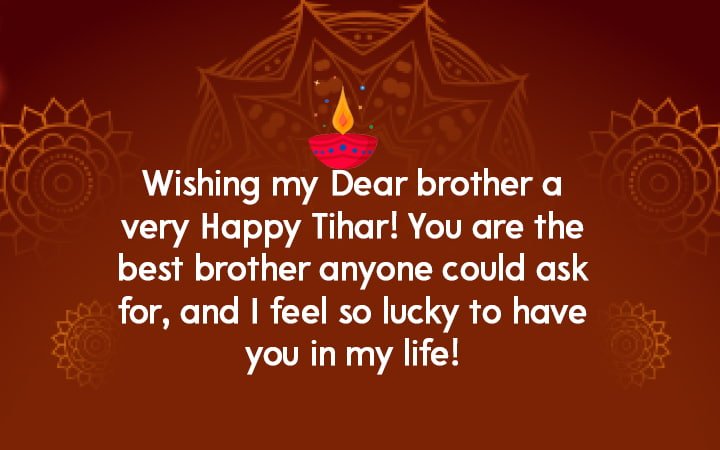
- I wish you a blessed Tihar!
- Best wishes for a happy and prosperous Tihar!
- Wishing you all the joys of Tihar!
- Wishing you a happy and blessed Tihar!
- May the joys of Tihar be with you always!
- Wishing you a very happy Tihar!
- May the Festival of Light bring you joy and happiness!
- Wishing you all the happiness of Tihar!
- May your Tihar be filled with joy and happiness!
- Wishing you a pleased and prosperous Tihar!
- Wishing you a blessed Tihar! May the Festival of Light bring you joy and happiness!
- Best wishes for a happy and prosperous Tihar! Wishing you all the joys of Tihar!
- Wishing you a happy and blessed Tihar! May your Tihar be filled with joy and happiness!
- Wishing you all the happiness of Tihar! May the joys of Tihar be with you always!
- Wishing you a very happy Tihar! May the Festival of Light bring you joy and happiness!
- Wishing you all the joys of Tihar! May your Tihar be filled with joy and happiness!
- May the festival of lights bring you happiness, joy, and peace.
- May the lamps of Tihar illuminate your life with good health, wealth, and prosperity.
- Wishing you and your family a very happy Tihar.
- May the lights of Tihar drive away all the darkness from your life and fill it with happiness, joy, and peace.
- May the festival of lights bring you and your family good luck, health, and happiness.
- Wishing you a blessed Tihar filled with the light of love, happiness, and peace.
- May Tihar be a festival of joy for you and your loved ones. Wishing you all a very happy Tihar.
- Wishing you a wonderful Tihar filled with all the happiness and joy of the season.
- May the light of Tihar fill your life with happiness and prosperity. Wishing you and your family a very happy Tihar.
- Wishing you a blessed Tihar full of the joys of the season. May you and your loved ones be blessed with good health, happiness, and peace.
- Happy Tihar! Wishing you all a delighted and prosperous festival. May goddess Laxmi bestow her blessings upon you all, and may your homes be filled with happiness and joy.
- Wishing you all a very Happy Tihar! May the festival of lights bring happiness, peace, and prosperity to your homes.
- May you all be blessed with the choicest blessings from the Almighty.
Tihar Wishes for Brothers
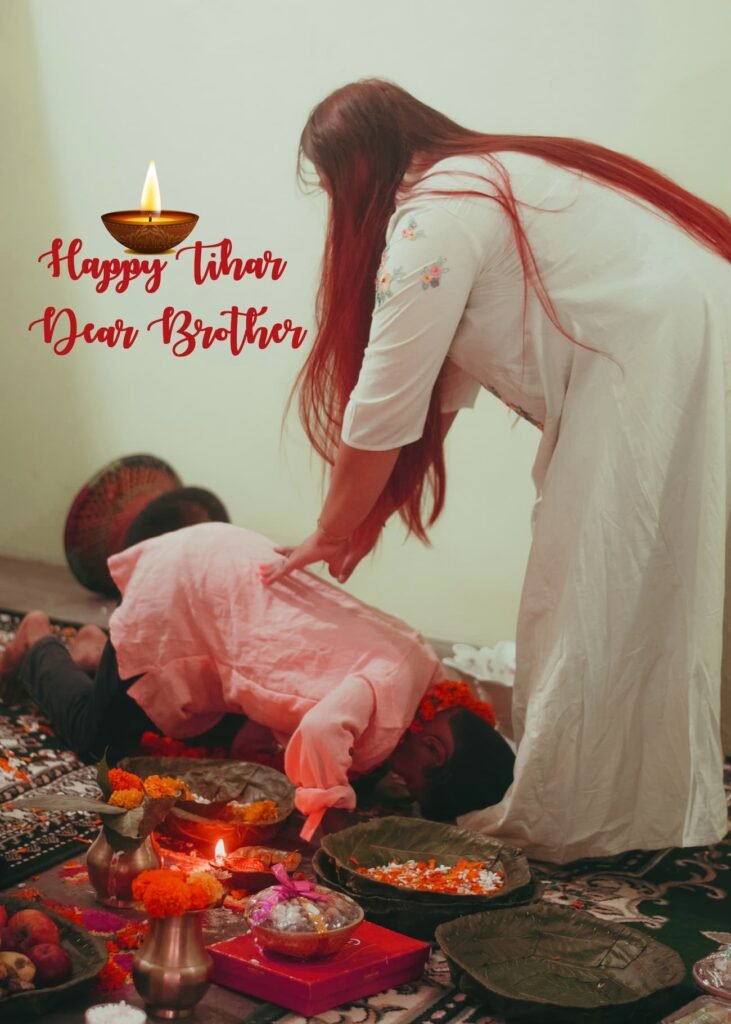
This year, let’s make Tihar even more special for our brothers! Here are some tihar wishes you can send their way to make them feel loved and appreciated.
- Happy Tihar to the most caring and protective brother in the world! May you always be blessed with good health, happiness, and success in everything you do!
- Wishing my dear brother a very happy Tihar! You are the best brother anyone could ask for, and I feel so lucky to have you in my life!
- To my amazing brother in Tihar, I hope this festival brings you all the joy, happiness, and good fortune that you deserve!
- Happy Tihar to the best brother around! I hope you know how much you mean to me and how much I love you!
- Wishing my dear brother a very happy Tihar! I hope this festival brings you everything you’ve been hoping for and more!
- To my wonderful brother in Tihar, I hope this day is as special and amazing as you are to me!
- Happy Tihar to the most incredible brother in the world! I hope you have a day that’s as wonderful as you are!
- Wishing my amazing brother a very happy Tihar! You mean everything to me and I hope this day is as special as you are!
- To my incredible brother in Tihar, I hope this festival brings you joy, happiness, and all the good things you deserve!
- Happy Tihar to the best brother in the world! I hope this day is everything you’ve been hoping for and more!
How to reply to Happy Tihar Wishes?
You may have received plenty of Tihar wishes from your friends and family, and you may be wondering how to reply to them.
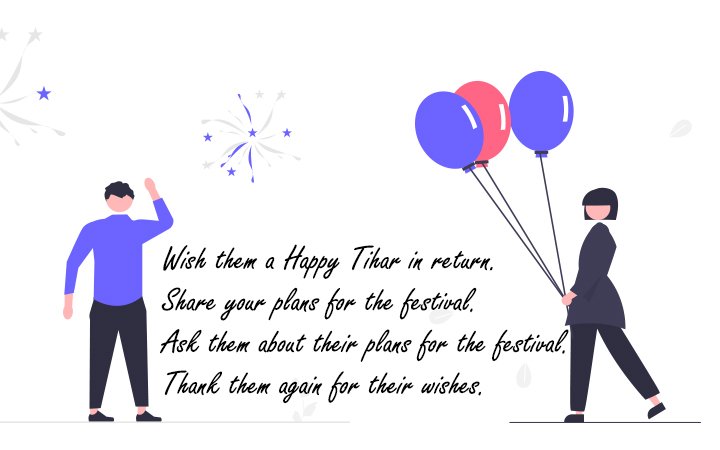
Here are some tips on how to reply to Happy Tihar wishes
- Thank the person for their wishes by copying the above messages/greetings
- Wish them a Happy Tihar in return.
- Share your plans for the festival.
- Ask them about their plans for the festival.
- Thank them again for their wishes.
Follow these tips, you’re sure to have a great time celebrating the festival of lights with your loved ones.
Here are the sample ways to reply to Happy Tihar wishes.
“Thank you so much for your kind wishes! I am truly grateful and wish you all the happiness in the world during this special time. Tihar is a time to celebrate and be joyous, and I hope that your holiday is filled with love, laughter, and good cheer. May your days be filled with blessings and your hearts be filled with love.”
Recommended Reading: Tihar Rangoli: Simple Rangoli Designs for Tihar
What are the best ways to wish someone a happy Tihar festival?
There are many ways to wish someone a happy Tihar festival. Some common ways include sending a card or message, giving a gift, or simply saying “Happy Tihar!”
What are some of the most popular Tihar festival greetings?
Some popular Tihar festival greetings include “Happy Tihar!” “Wishing you a blessed Tihar!” and “May the festival of lights bring you joy and happiness.”
What should I include in a Tihar festival card or message?
When sending a Tihar festival card or message, you can include well-wishes for the recipient, such as “Wishing you a blessed Tihar!” or “May the festival of lights bring you joy and happiness.” You can also include a personal message or memory.
Tihar is the Hindu festival of lights and love. People from all over the world send wishes to their friends, relatives, and loved ones. I hope this year you can also send your Tihar wishes to your Nepali Family in English.
Suraj Katwal
Suraj is a travel enthusiast who believes in finding solace in the heart of nature. He enjoys exploring new destinations, different culture, and encouraging people to travel.
Related Articles...
Halal Restaurants in Kathmandu
Yarsagumba in Nepal: Cost, Benefits of Caterpillar Fungus
Best Thakali Restaurants in Kathmandu
Best Sekuwa Places in Kathmandu
Best Vegan Restaurants in Kathmandu
Best Biryani in Kathmandu
Shivaratri Wishes: 50+ Best Wishes in English & Nepali
Maha Shivaratri Festival in Nepal
Leave a Comment Cancel reply
About stunning nepal.
Stunning Nepal is a travel blog that intends to provide travel tips, references & guides, things to do & also your guide for hiking & trekking in Nepal.
Travel Guide
Things To Do
Trekking in Nepal
Privacy Policy
Get in Touch
Stunning Nepal
Address: Dhanawantari Marg, Kathmandu 44600, Nepal
+977-9808211139
© 2024 Stunning Nepal. All Rights Reserved
How does this work

Earl M. Kinkade
Finished Papers
Customer Reviews
Perfect Essay

Why is writing essays so hard?
Patterns and boring topics imposed by schools and universities are not very conducive to creativity and human development. Such essays are very difficult to write, because many are not interested in this and do not see the meaning of the text. There are a number of criteria that make it impossible to write essays:
- Boring and incomprehensible topics. Many topics could be more interesting, but teachers formulate them in a way that makes you want to yawn.
- Templates. 90% do not know how to make an essay interesting, how to turn this detailed answer to a question into a living story.
- Fear of not living up to expectations. It seems to many that the essay is stupid and that they simply did not understand the question. There is a fear of getting a bad mark and disappointing the professor, parents and classmates. There is a fear of looking stupid and embarrassing in front of the team.
- Lack of experience. People don't know what and how to write about. In order to make a good essay, you need to have a perfect understanding of the topic and have the skills of a writer.
That is why the company EssaysWriting provides its services. We remove the responsibility for the result from the clients and do everything to ensure that the scientific work is recognized.
When you write an essay for me, how can I use it?
DRE #01103083
- Individual approach
- Fraud protection
Finished Papers
How Do I Select the Most Appropriate Writer to Write My Essay?
The second you place your "write an essay for me" request, numerous writers will be bidding on your work. It is up to you to choose the right specialist for your task. Make an educated choice by reading their bios, analyzing their order stats, and looking over their reviews. Our essay writers are required to identify their areas of interest so you know which professional has the most up-to-date knowledge in your field. If you are thinking "I want a real pro to write essay for me" then you've come to the right place.
Essays service custom writing company - The key to success
Quality is the most important aspect in our work! 96% Return clients; 4,8 out of 5 average quality score; strong quality assurance - double order checking and plagiarism checking.

Finished Papers
How Our Essay Service Works
Customer Reviews

IMAGES
VIDEO
COMMENTS
The festival is celebrated for five days. Hence, it is known as Panchak. The festival begins in Triyodashi of Karthik Krishna Paksha, a day is known as Kag Tihar, and ends in Dutiya of Kartik Sukla Paksha, a day is known as Bhai Tika. The first day is called the Kag Tihar. On this day, Crow or Kag is worshipped as the message carrier.
Tihar (also known as Deepawali and Yamapanchak) is a five-day Hindu festival of Diwali celebrated in Nepal and the Indian regions of Sikkim and Gorkhaland (particularly the towns of Darjeeling and Kalimpong), which host a large number of ethnic Indian Gorkhas. Diwali is referred to as Tihar in Nepal, Sikkim and Gorkhaland and is marked by lighting diyo inside and outside the home but unlike ...
Tihar is one of the biggest festivals celebrated in Nepal after Dashain. With the end of Dashain, we have Tihar just around the corner. Tihar is celebrated not only in Nepal but also in some states of India. It is also popularly known as Dipawali and even as the "Festival of Lights". Dipawali is best known as Diwali in India.
Tihar Festival, also known as the Festival of Lights, is one of the most important festivals in Nepal. It is celebrated in the month of Kartik, which usually falls in October or November, and lasts for five days. The festival holds great religious and cultural significance for the people of Nepal, and it is believed to bring prosperity ...
Tihar also known as Deepawali is a Hindu festival. It is celebrated for 5 days. It is celebrated mainly in Nepal and the Indian states of Assam and Sikkim.It is also celebrated in Darjeeling district of West Bengal.It is the festival of lights. In this festival diyas are lit inside and outside the houses to make it bright at night. It is known as Swanti among the Newars and as Diwali among ...
The fifth and final day of Tihar is dedicated to the bond between brothers and sisters, similar to the festival of Bhai Dooj celebrated in India. Sisters perform a special puja for their brothers, applying tika, giving them garlands, and preparing a lavish feast. In return, brothers present gifts to their sisters and offer their blessings.
Tihar is also one of the most awaited festivals that is celebrated yearly. It is a five-day Hindu festival celebrated all over Nepal and also in some states of India. It is known as Swati among Newars and Diwali among the Madhesis and Indian communities. This festival is also called "The Festival of Lights" as lights are the prominent ...
Tihar, also known as Deepawali or the Festival of Lights, is one of the most important festivals in Nepal. It is a five-day long festival that is celebrated by both Hindus and Buddhists in the country. The festival is celebrated to honor and worship various Hindu deities, including the god of wealth, Lord Vishnu, and the god of death, Lord Yama ...
Akancha Chhetri. Deepawali or Tihar is the second greatest Hindu festival after Dashain which is celebrated for five days in either Kartik or Mangsir ( November). It is a festival of lights, flowers, sweets, and kites. During festivals, birds and animals are worshipped. Deepawali is observed for five days which is also called Yama Panchak.
What is Tihar? Tihar is a Hindu festival that celebrates the victory of good over evil. It is also known as the Festival of Lights and is celebrated by lighting candles and lamps. The festival lasts for five days and is celebrated in Nepal and India. The Five Days of Tihar. Tihar, also known as Dipawali, is one of the most popular festivals in ...
To conclude, Dashain and Tihar symbolise what it means to carry on a culture and tradition in a globalised and integrated world. Cultural dilution and hegemony of a dominant culture are inevitable ...
Tihar Festival, also known as Deepawali or Diwali, is a significant and vibrant festival celebrated in Nepal. This auspicious event holds great importance in Nepalese culture and the Hindu religion, as it symbolizes the victory of light over darkness and good over evil. The festival is also called the "Festival of Lights" due to the widespread ...
Tihar is celebrated for five days with a great significance of each day. Dipawali signifies victory of light over darkness, good over evil, knowledge over ignorance and hope over despair. Based on legends the festival is celebrated remembering Yamuna's (a sister) dedication and prayer to protect her brother from the God of death, Yamaraj.
Tika and Jamara. Among the festivals we celebrate, Dashain being the greatest one for Nepalese is always celebrated with the zeal and in joyful ways. It is celebrated almost for 15 days in the month of October; 1st, 7th, 8th, 9th and 10th days are the most important. The 1st day is welcomed following the rituals of 'Ghatsthapana' by ...
Essay on Tihar | Essay on Deepawali | Tihar essay in English |Deepawali Essay in English| Eng Teach
Essay on Tihar or Deepawali in English | essay | writing | English writing | handwriting | Eng Teach Please like, comment, share and subscribe my channel. Th...
Essay on Tihar or Deepawali | Essay writing | Tihar essay | essay | writing |handwriting |Eng Teach #essaywriting #handwriting #engteach
Wishing you all a very happy Tihar. Wishing you a wonderful Tihar filled with all the happiness and joy of the season. May the light of Tihar fill your life with happiness and prosperity. Wishing you and your family a very happy Tihar. Wishing you a blessed Tihar full of the joys of the season.
Tihar Essay In Nepali Language. On-schedule delivery. Compliance with the provided brief. Chat with your helper. Ongoing 24/7 support. Real-time alerts. Free revisions. Free quality check. Free title page.
Essay On Tihar, Ksa Resume Sample Project Manager, Jobtabs Job Search And Resume 2011 5 0 0 1647, What Are Conversation Essay, What Should I Look For In A Resume, How To Write Research Based Essay, Business Plan Format Samples
A professional essay writing service is an instrument for a student who's pressed for time or who doesn't speak English as a first language. However, in 2022 native English-speaking students in the U.S. become to use essay help more and more. Why is that so? Mainly, because academic assignments are too boring and time-consuming.
Dashain And Tihar Essay In English | Best Writing Service. #2 in Global Rating. These kinds of 'my essay writing' require a strong stance to be taken upon and establish arguments that would be in favor of the position taken. Also, these arguments must be backed up and our writers know exactly how such writing can be efficiently pulled off ...
Essay On Dashain And Tihar In Nepali. Place your order online. Fill out the form, choose the deadline, and pay the fee. My experience here started with an essay on English lit. As of today, it is quite difficult for me to imagine my life without these awesome writers. Thanks.